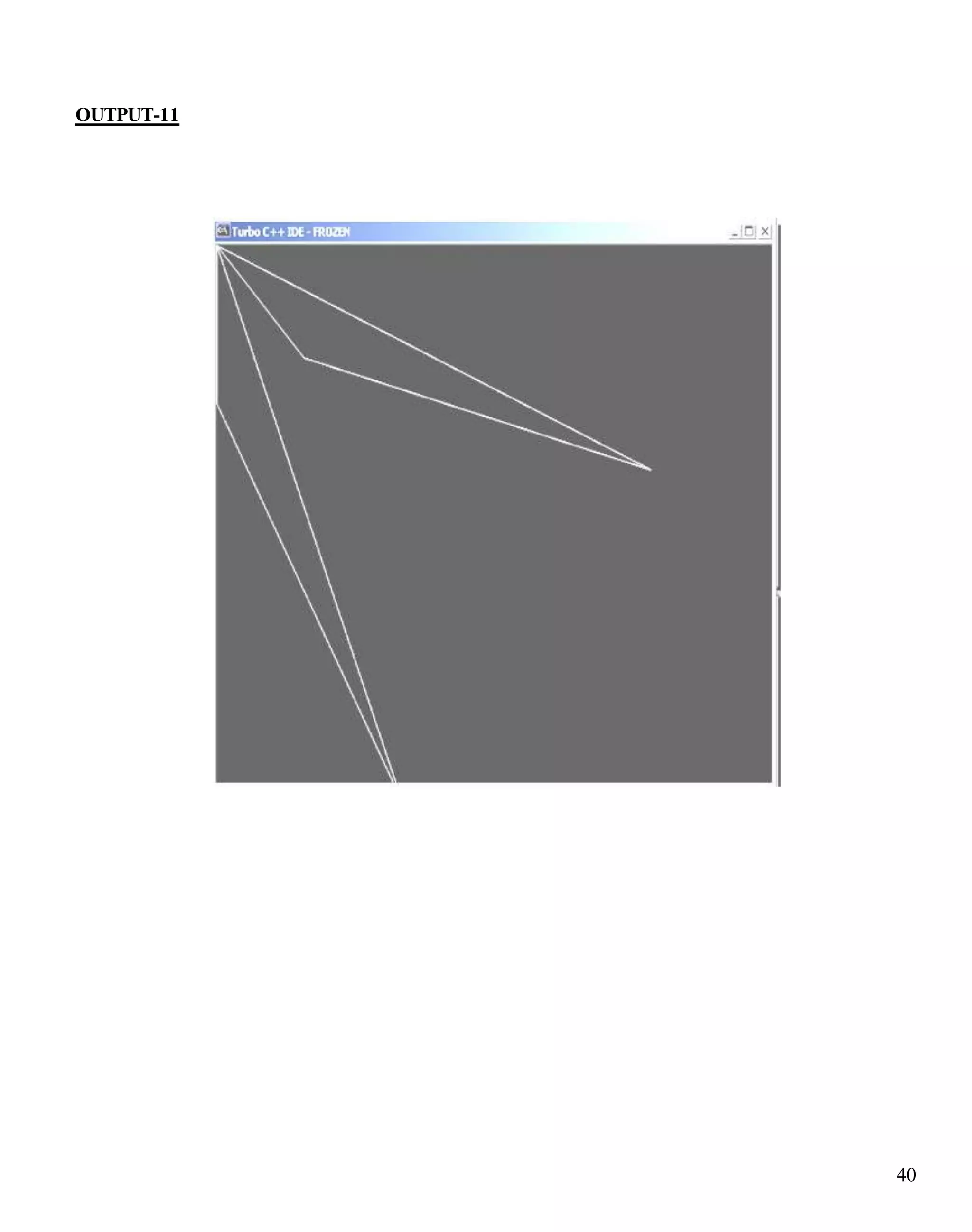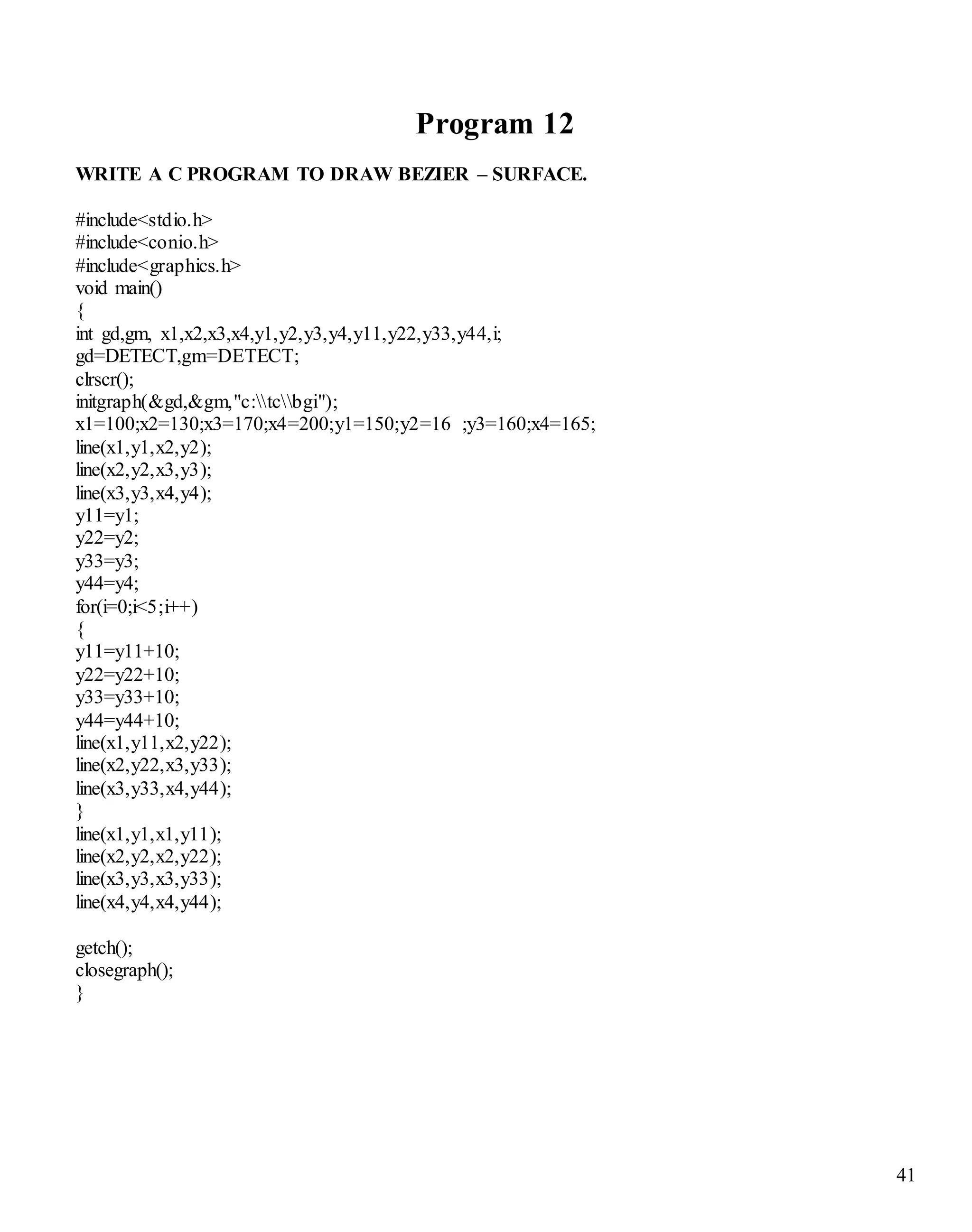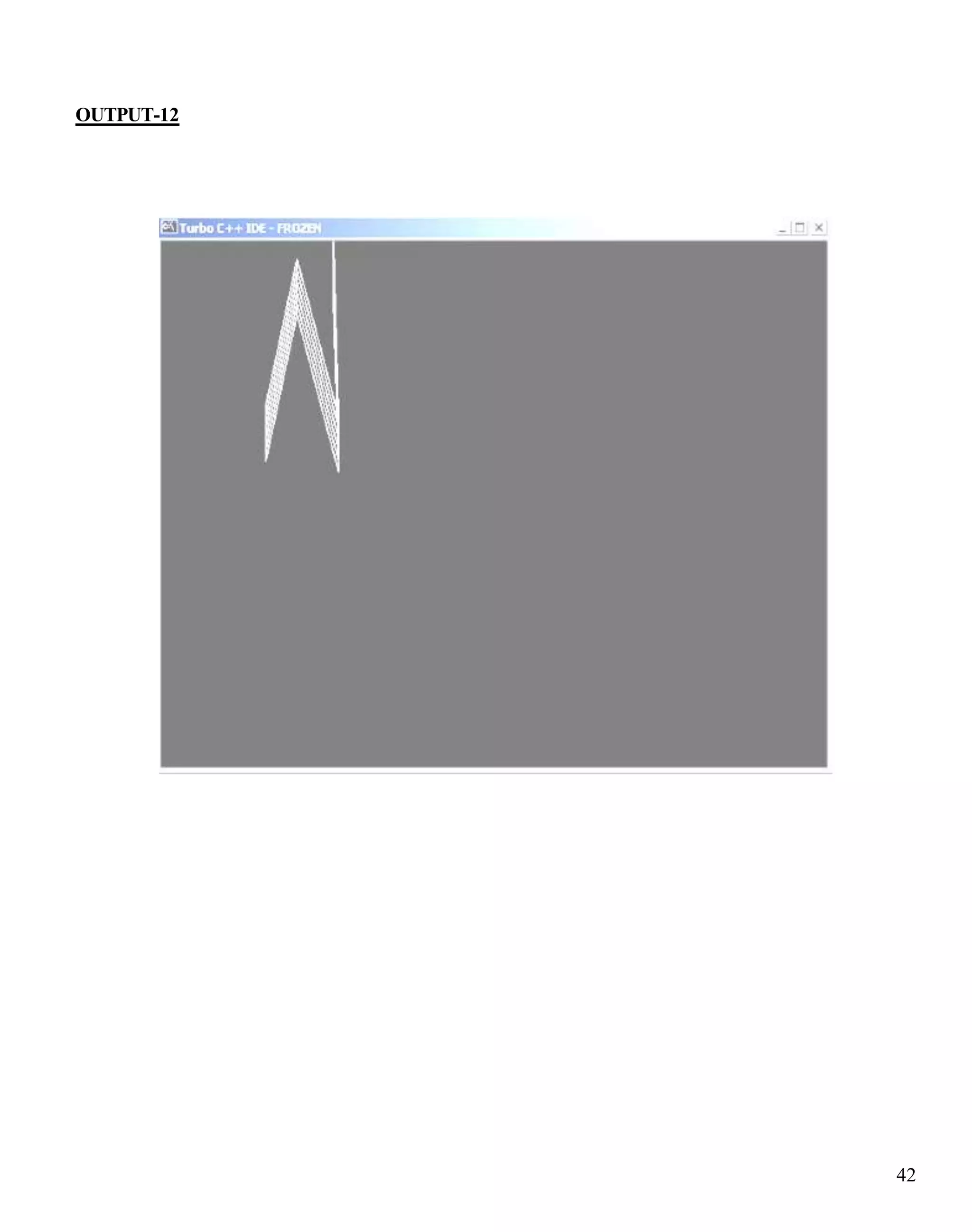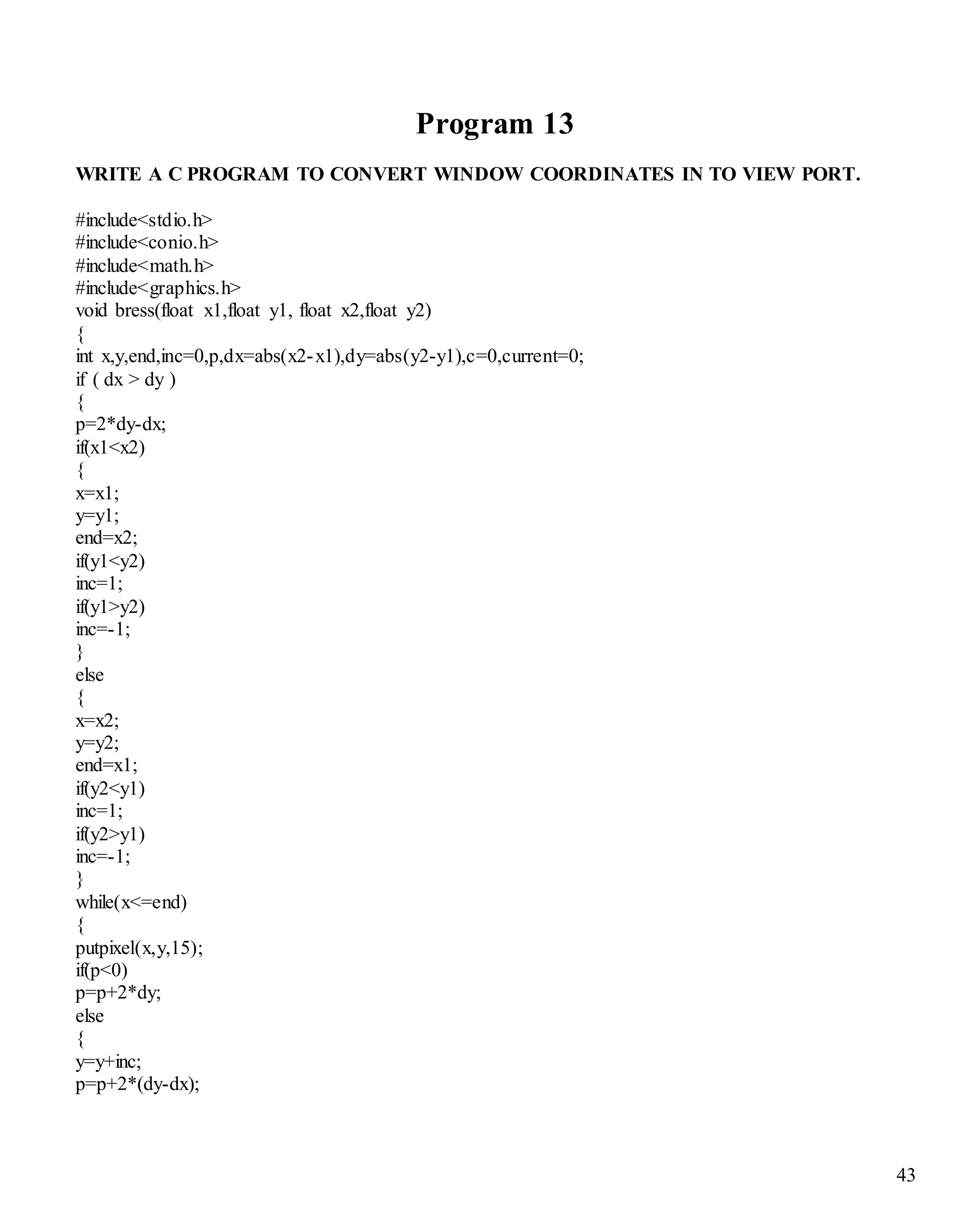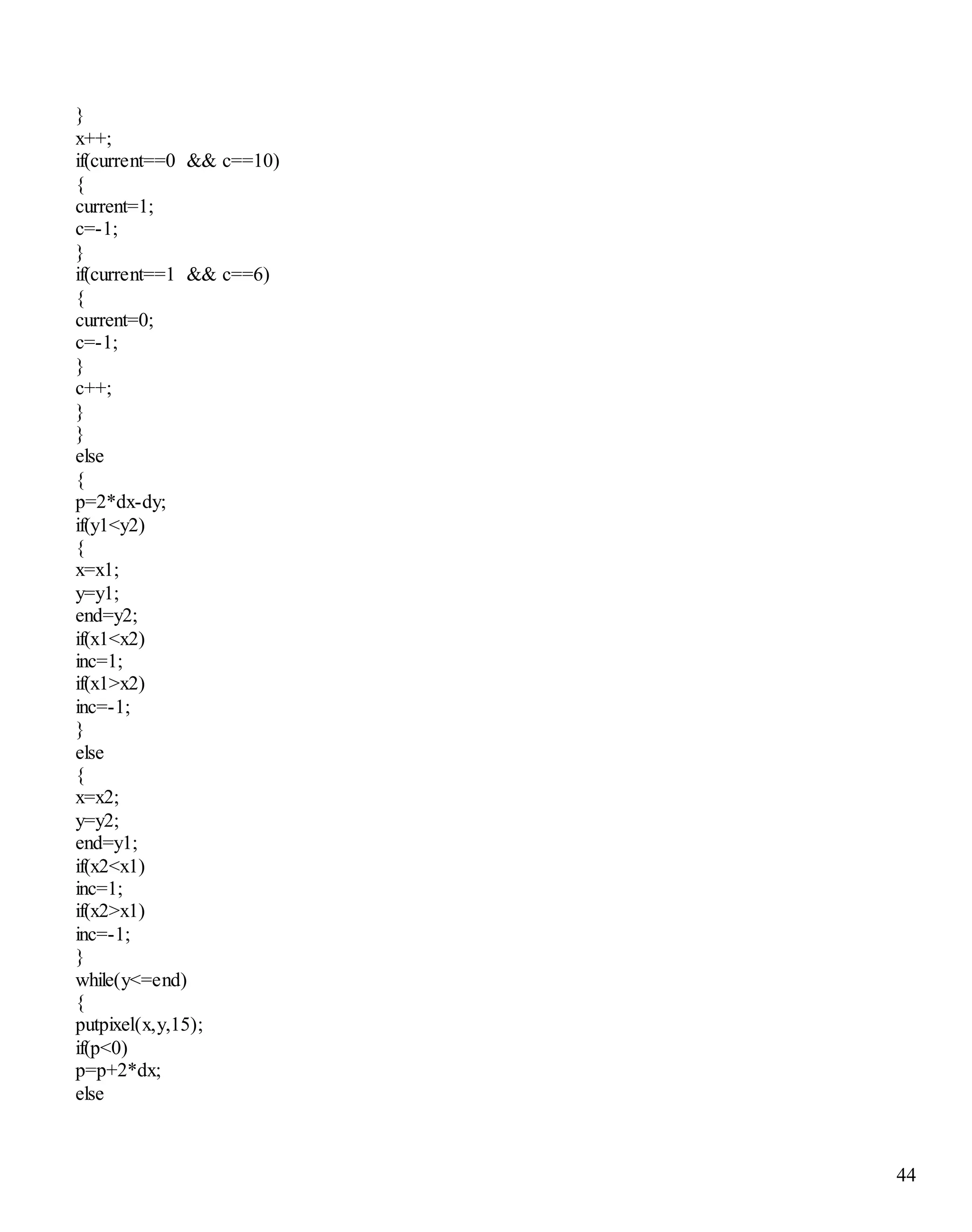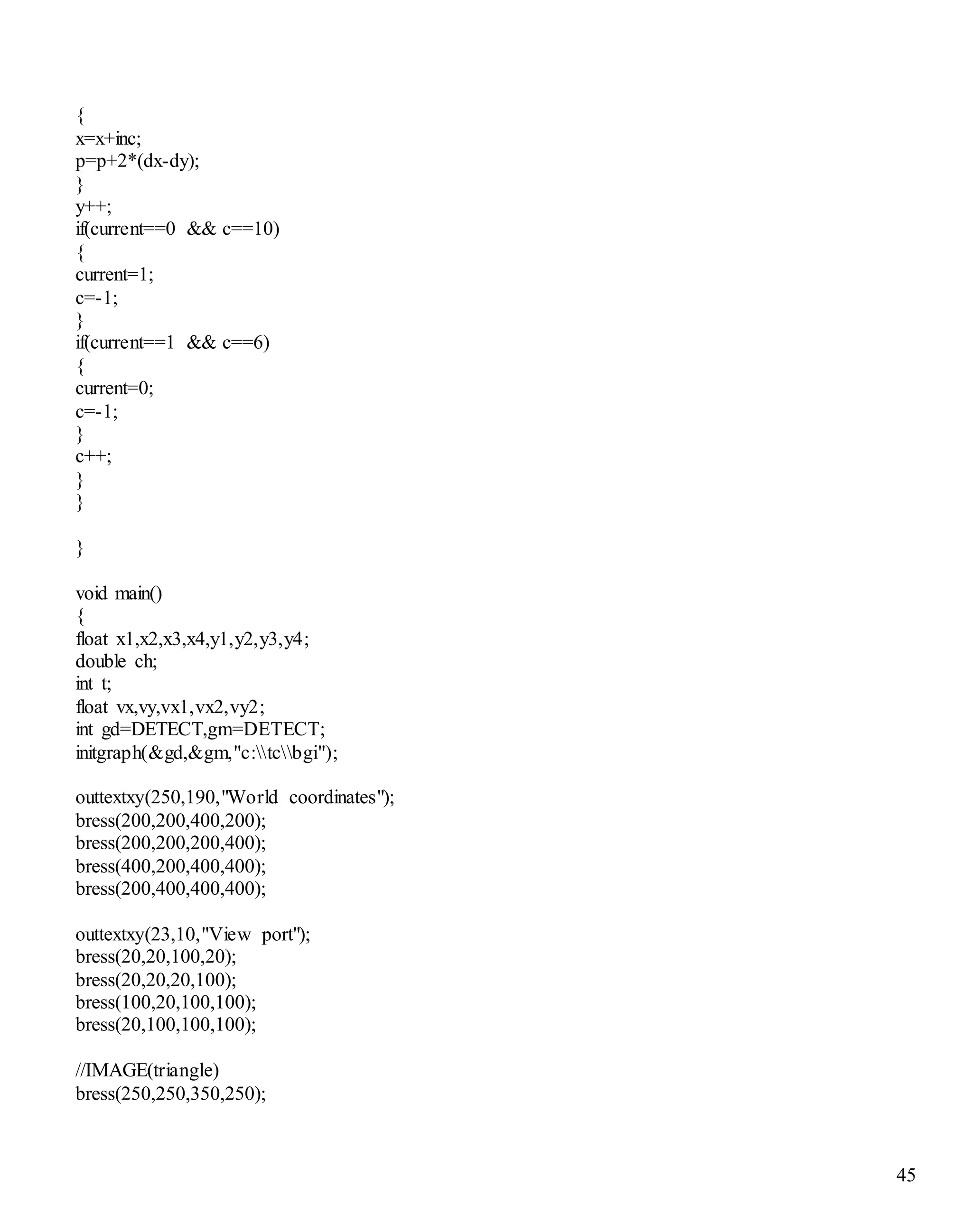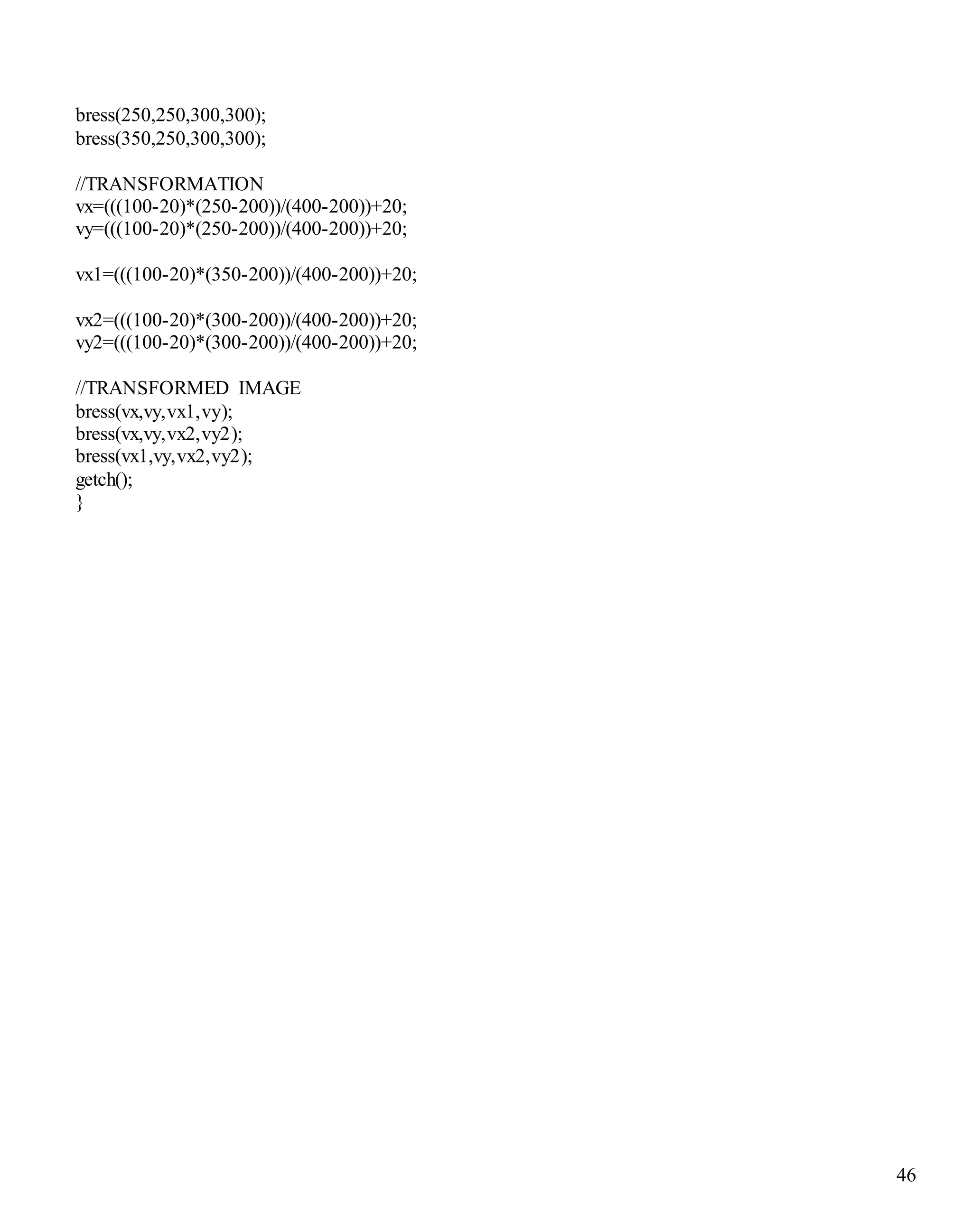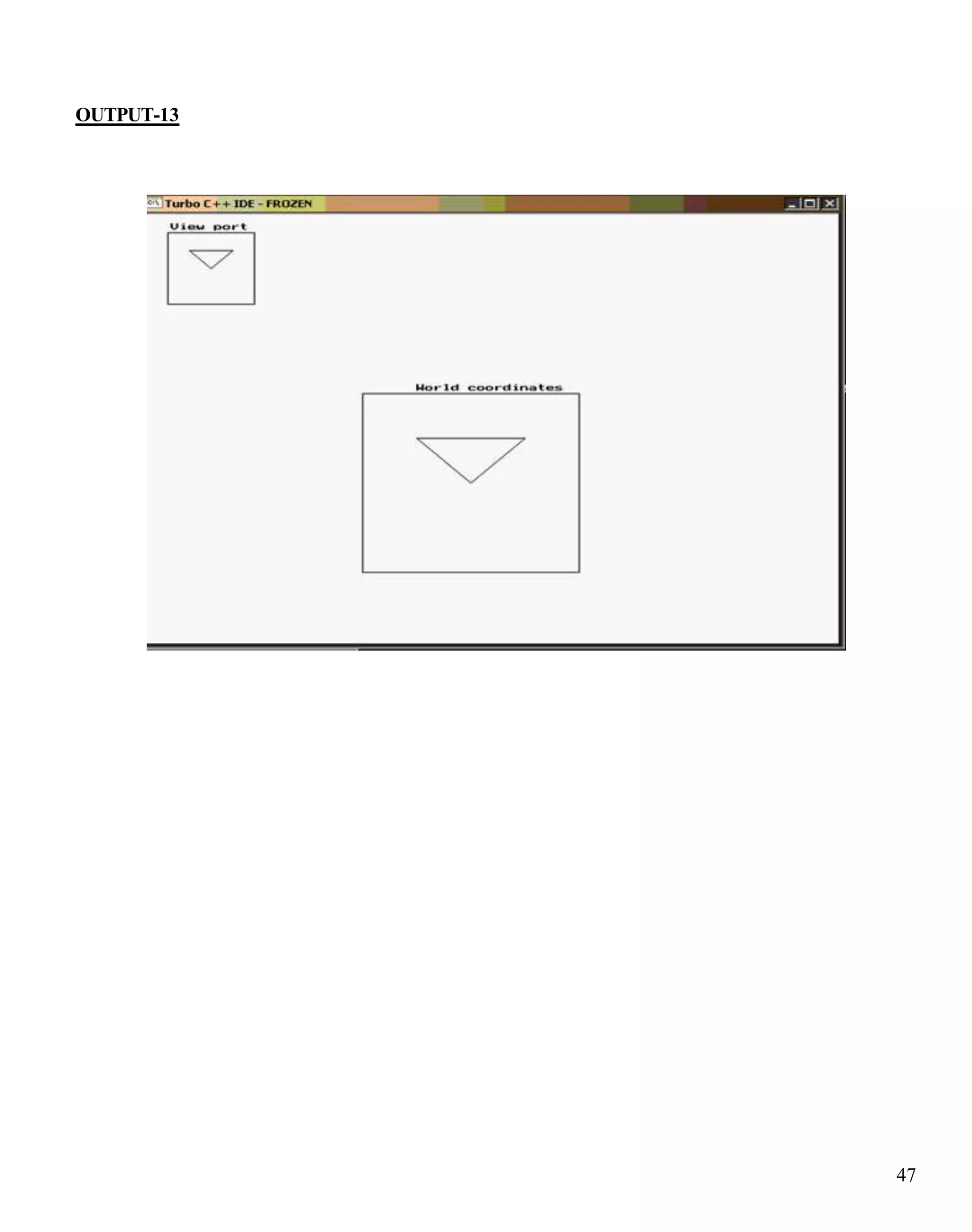This program writes a C code to shear a cuboid. It includes graphics header files and uses the Bresenham's line algorithm to draw lines. The program defines a function called 'bress' to draw lines using the Bresenham algorithm. It takes coordinates of two points as input and uses conditions on the slope to determine the increment, endpoint and direction of line drawing. This function is used to draw the individual lines of the cuboid before and after shearing.
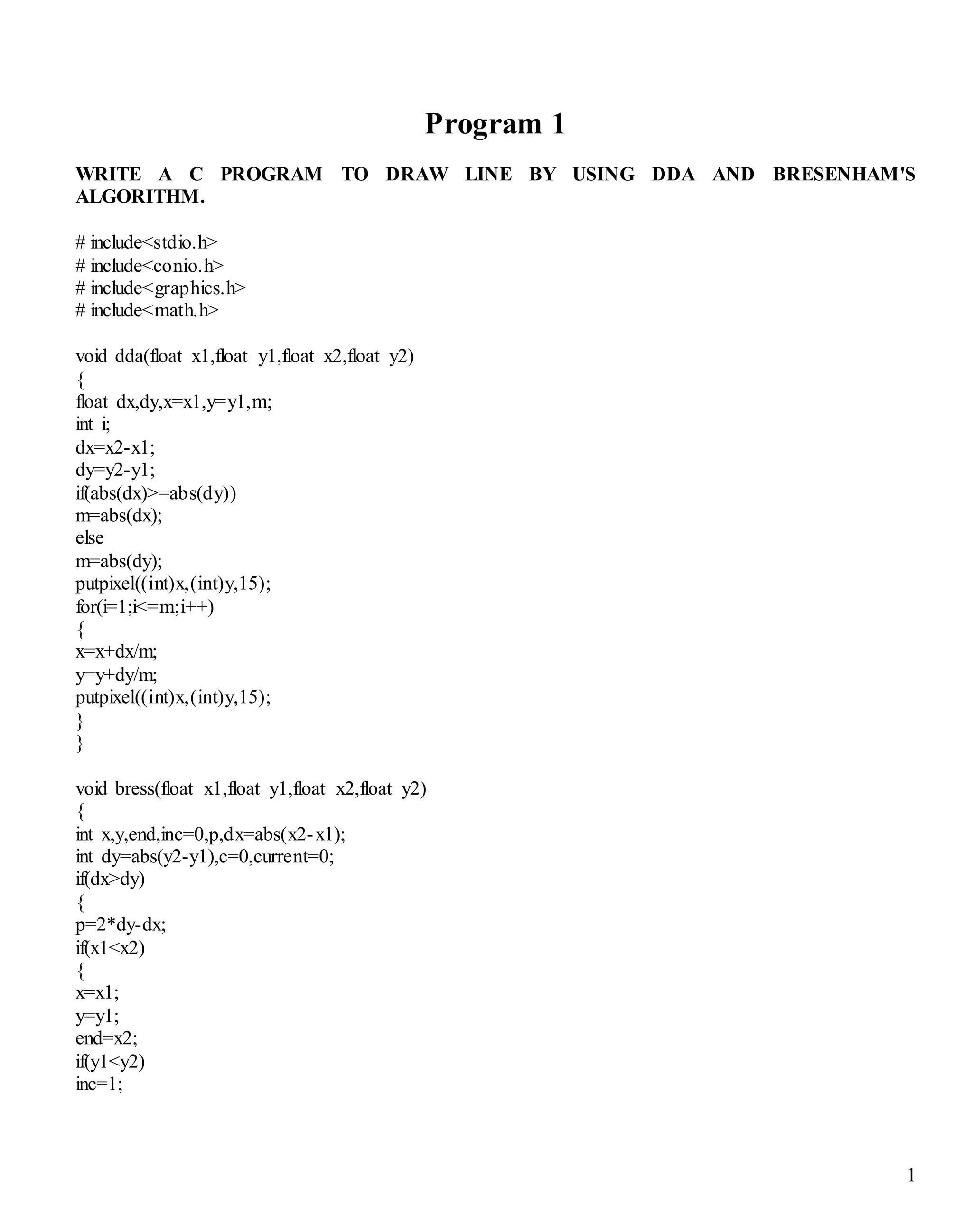
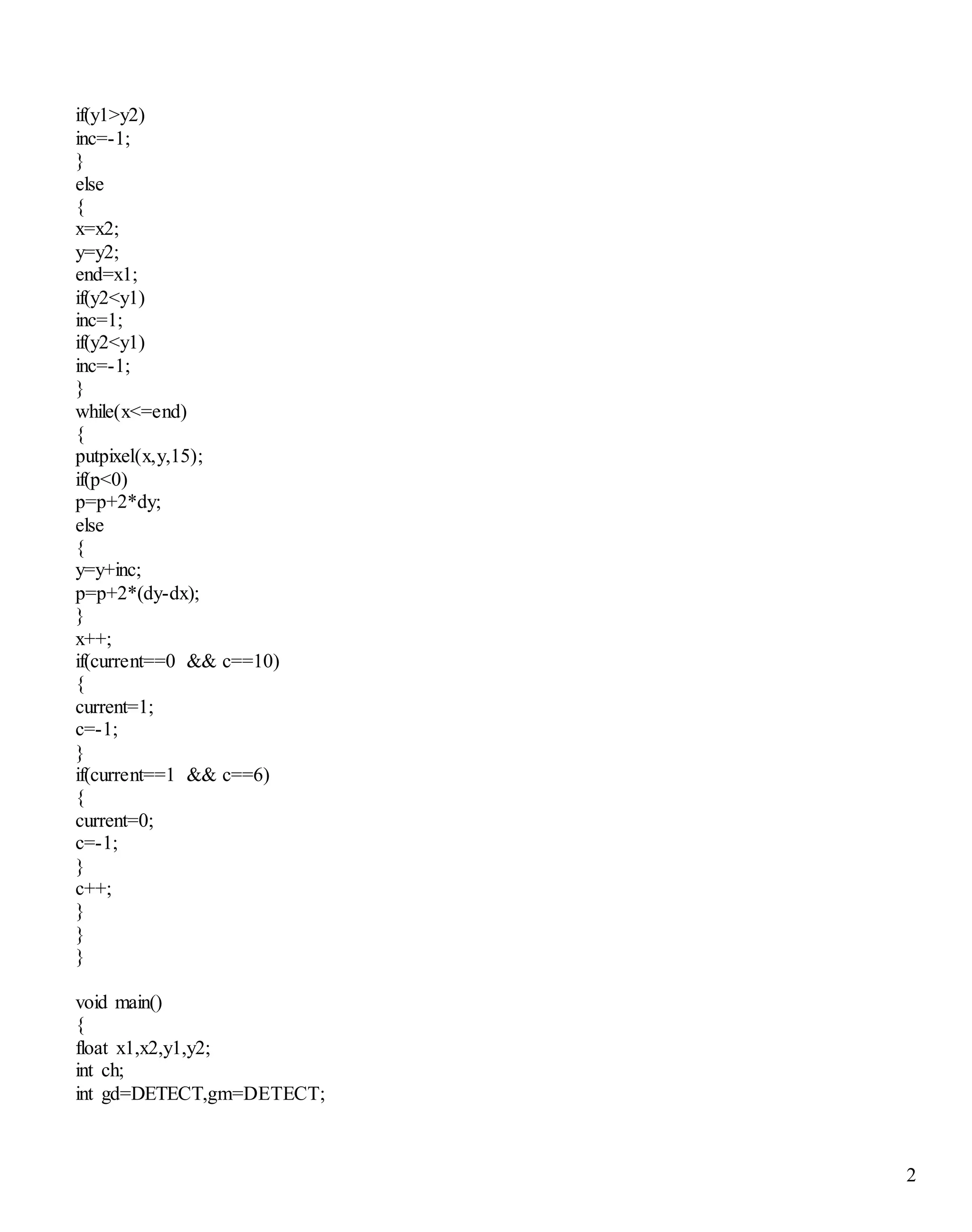
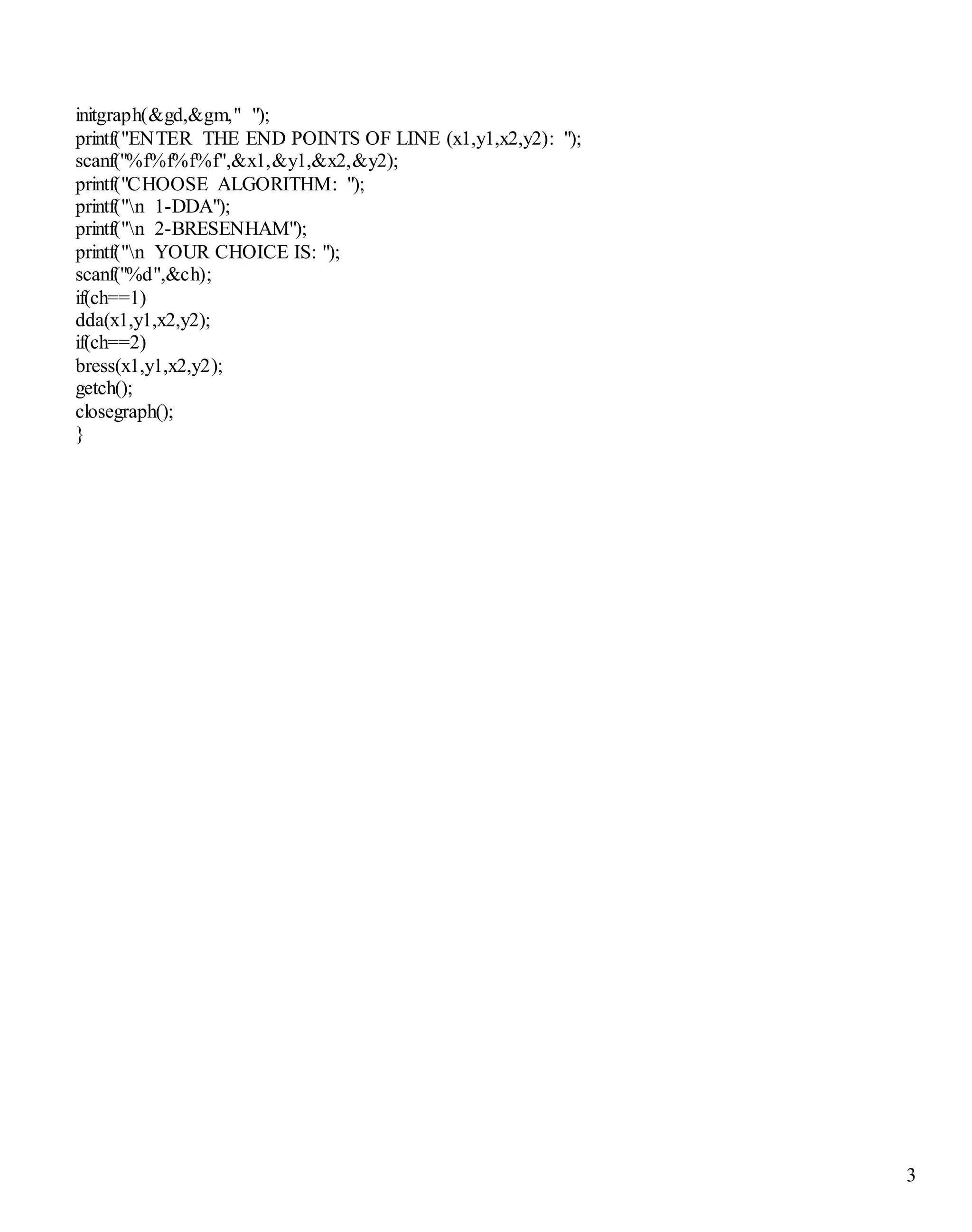
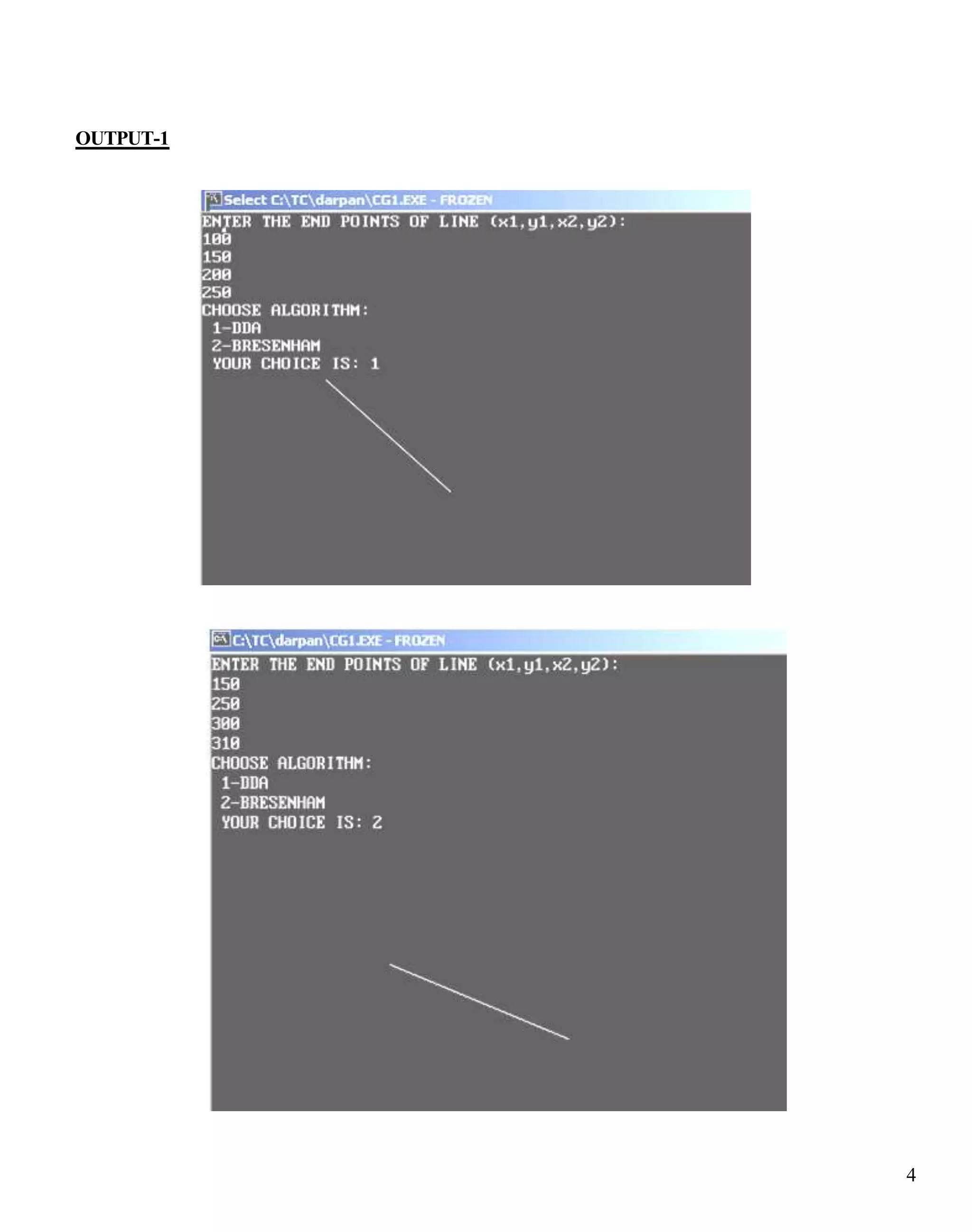
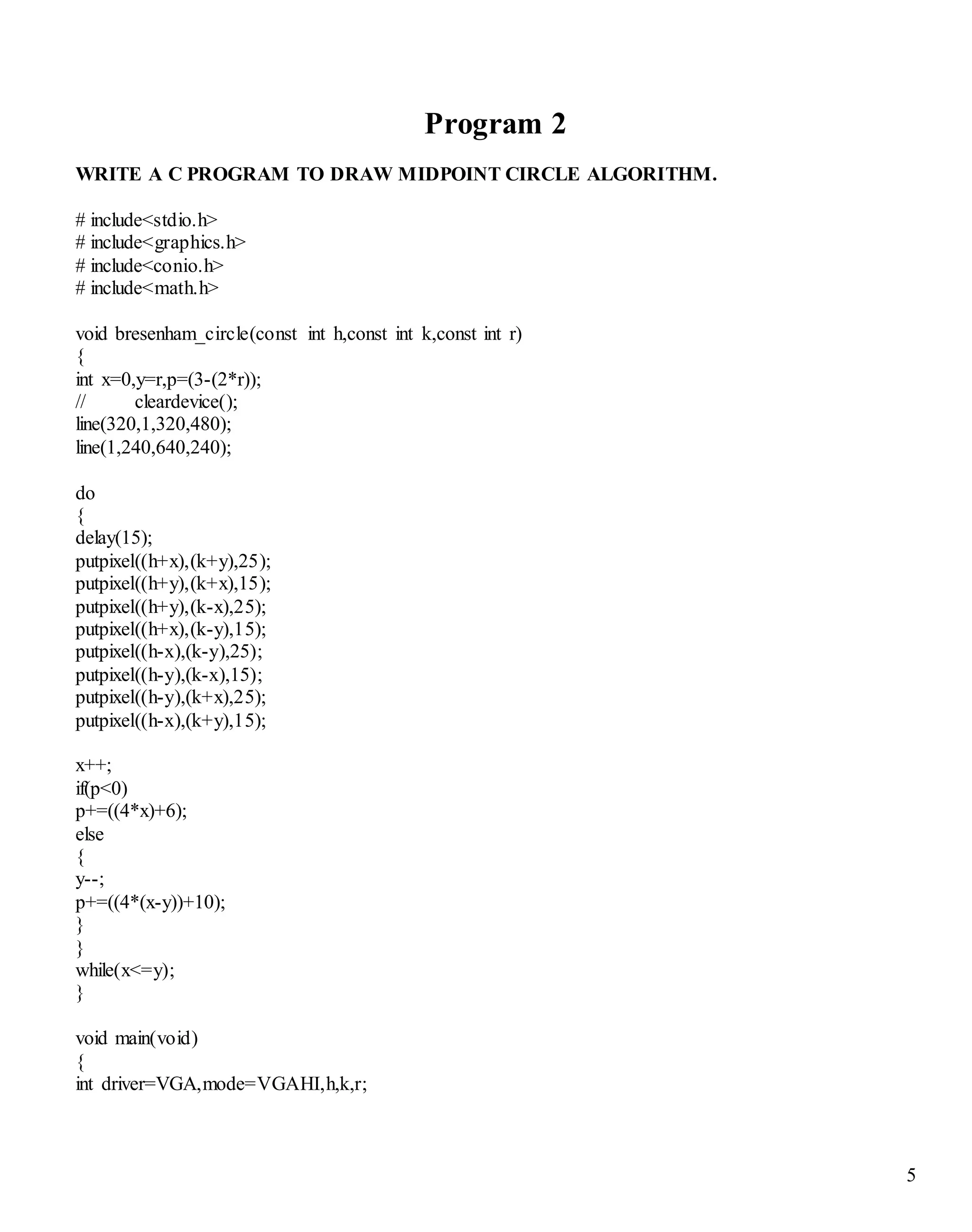
![6
initgraph(& driver,& mode,"c:tcbgi");
printf("n ENTER THE VALUE OF [H-COORDINATE]: ");
scanf("%d",&h);
printf("n ENTER THE VALUE OF [K-COORDINATE]: ");
scanf("%d",&k);
printf("n ENTER THE VALUE OF THE RADIUS: ");
scanf("%d",&r);
bresenham_circle(320+h,240-k,r);
do
{
r--;
bresenham_circle(320+h,240-k,r);
}while(r!=0);
getche();
}](https://image.slidesharecdn.com/computergraphicslabfilecprograms-141126103629-conversion-gate01/75/Computer-Graphics-Lab-File-C-Programs-6-2048.jpg)
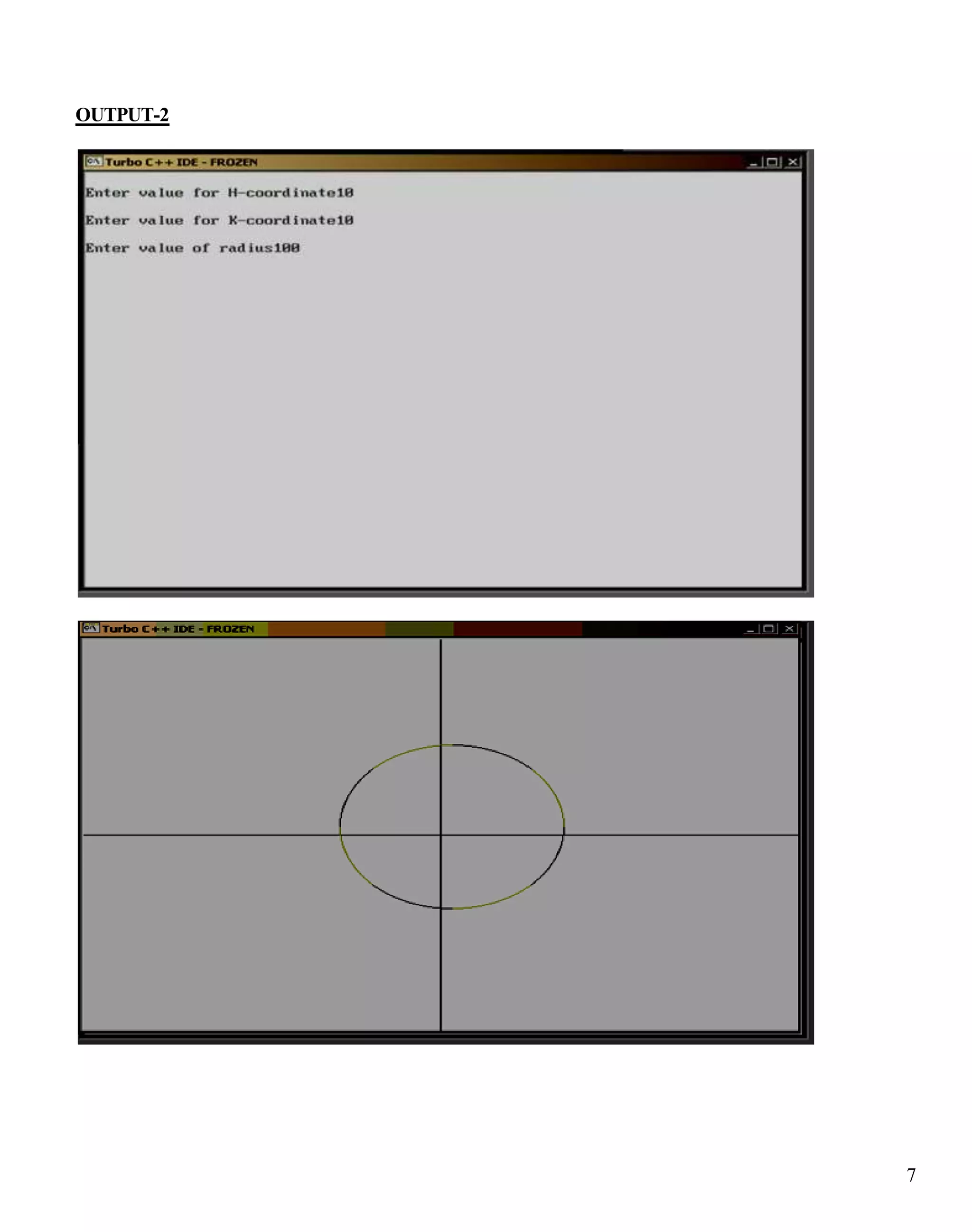
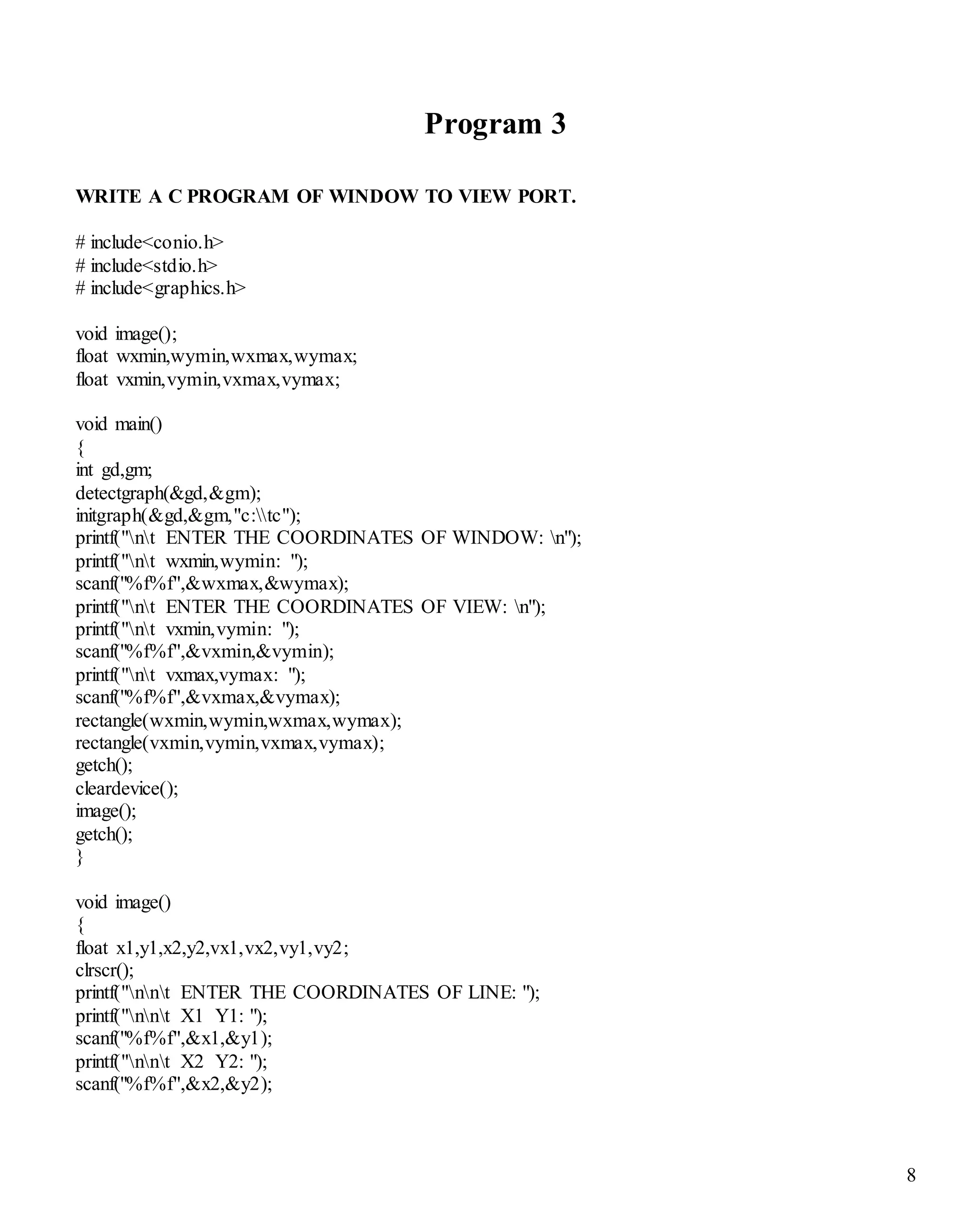
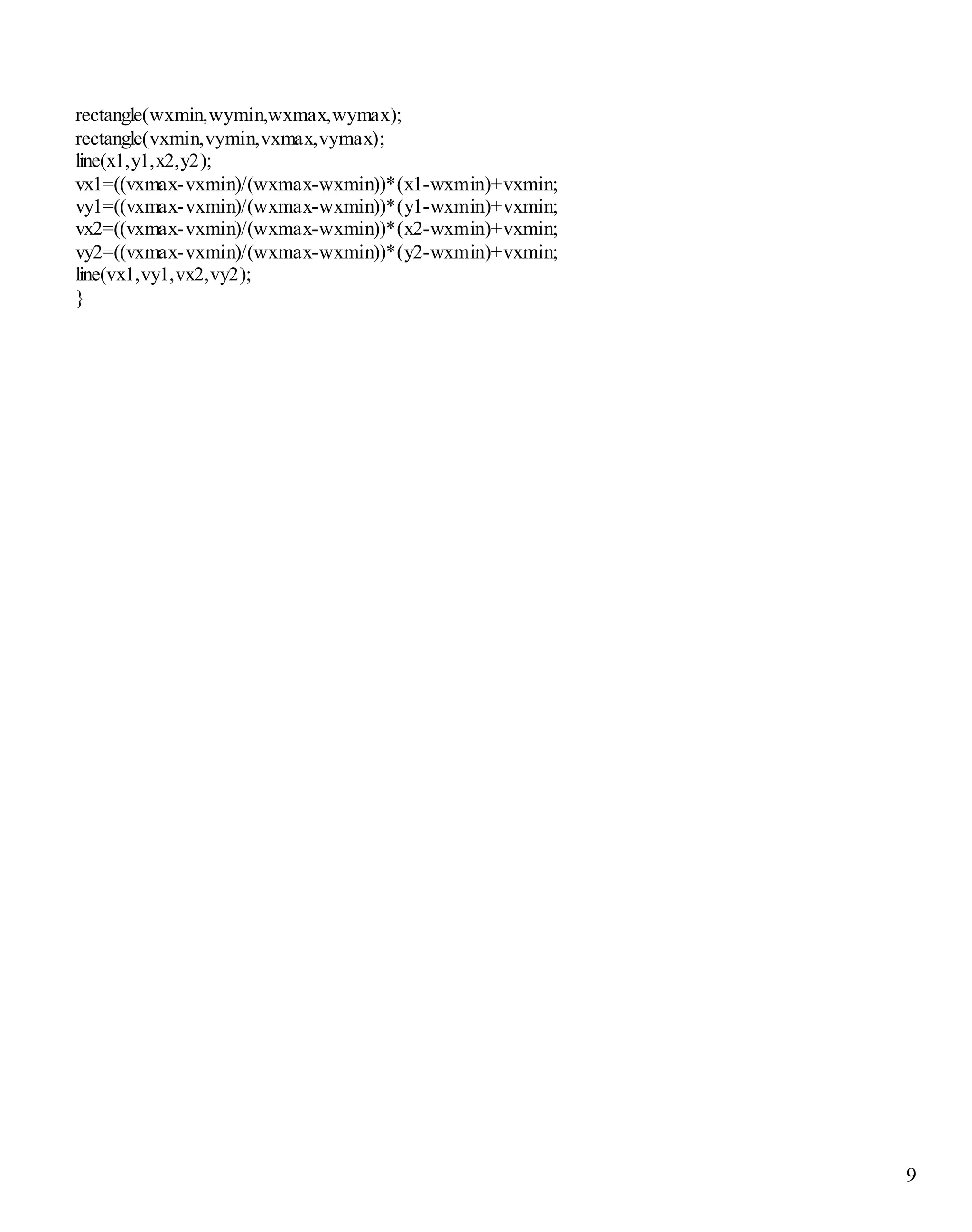
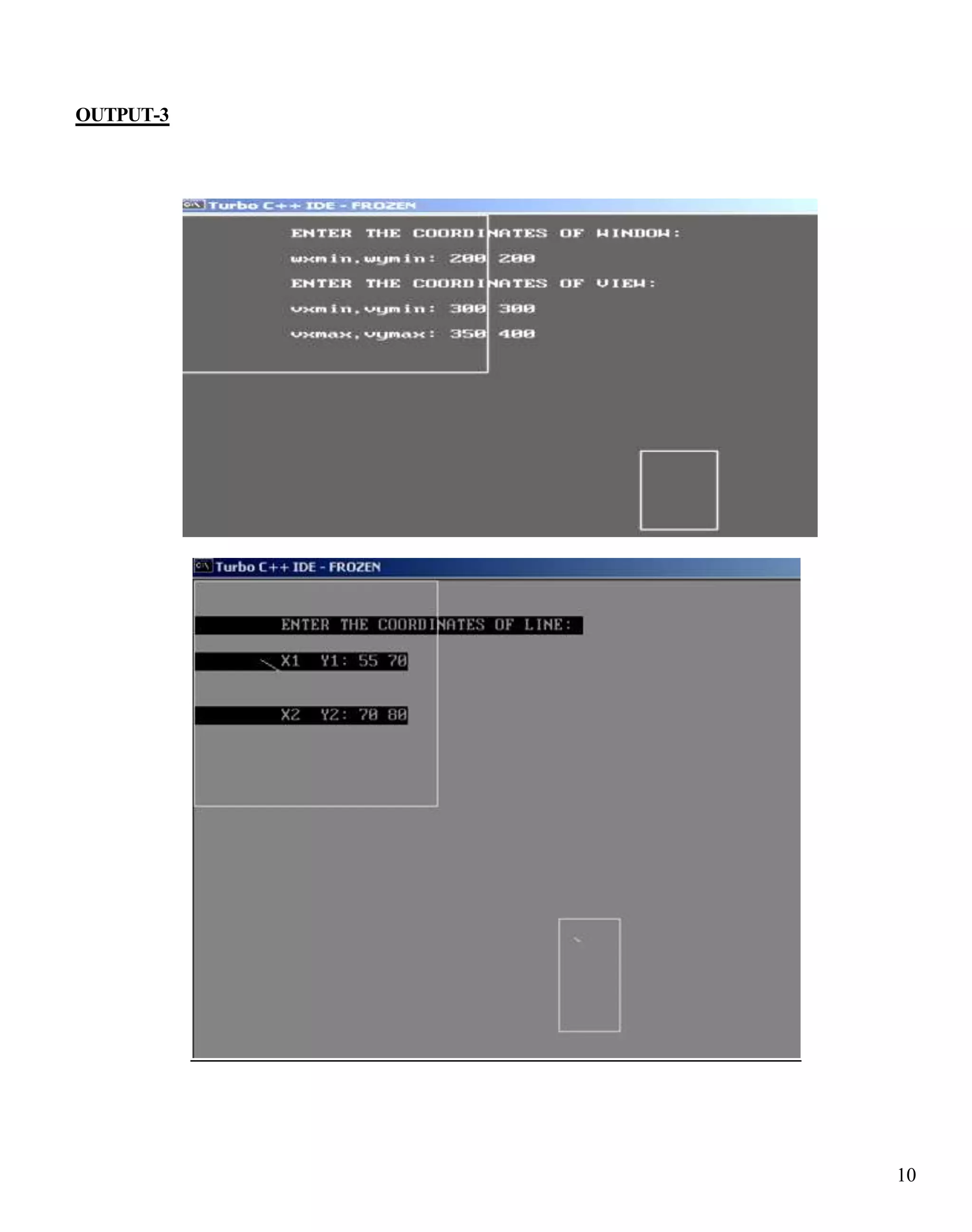
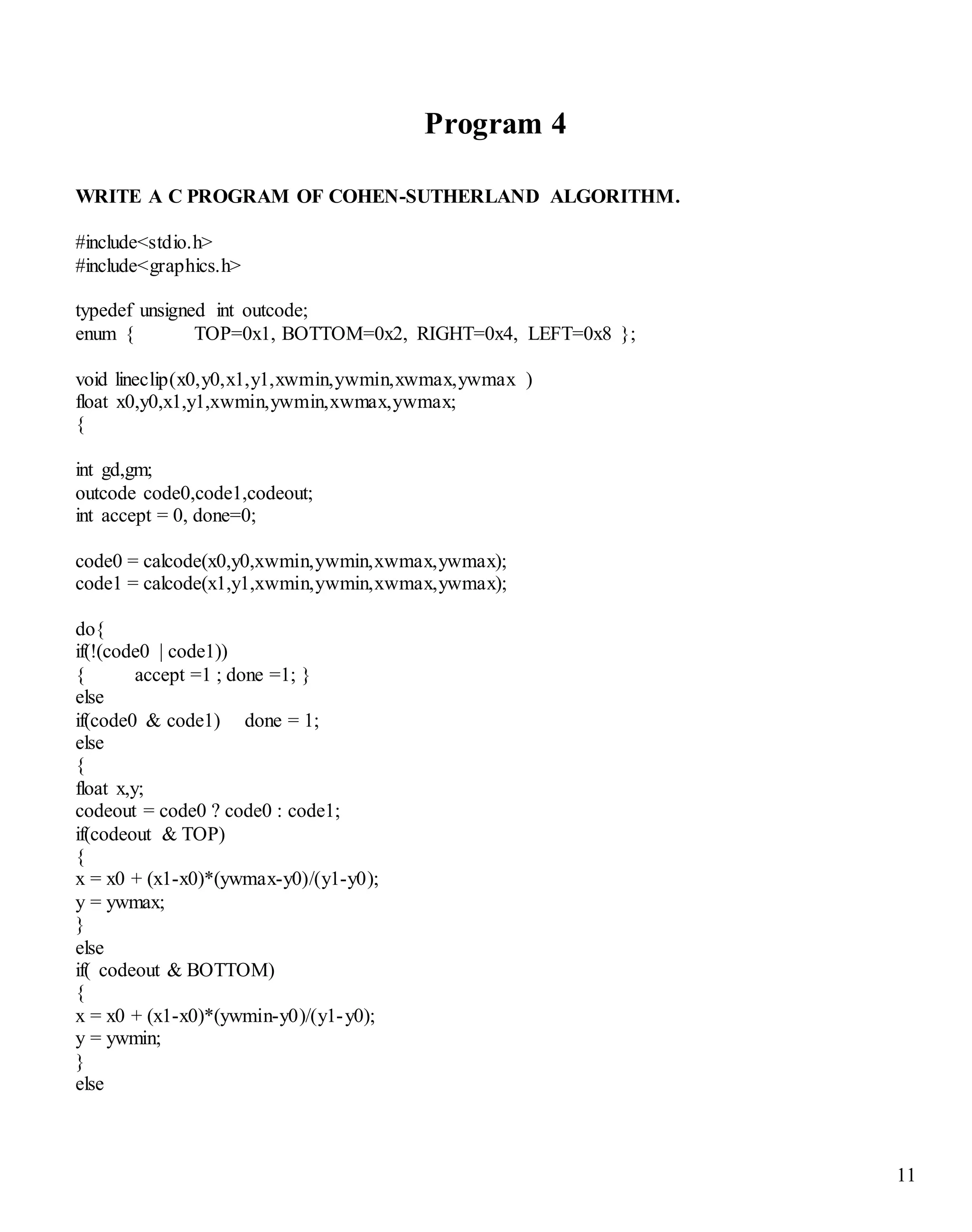
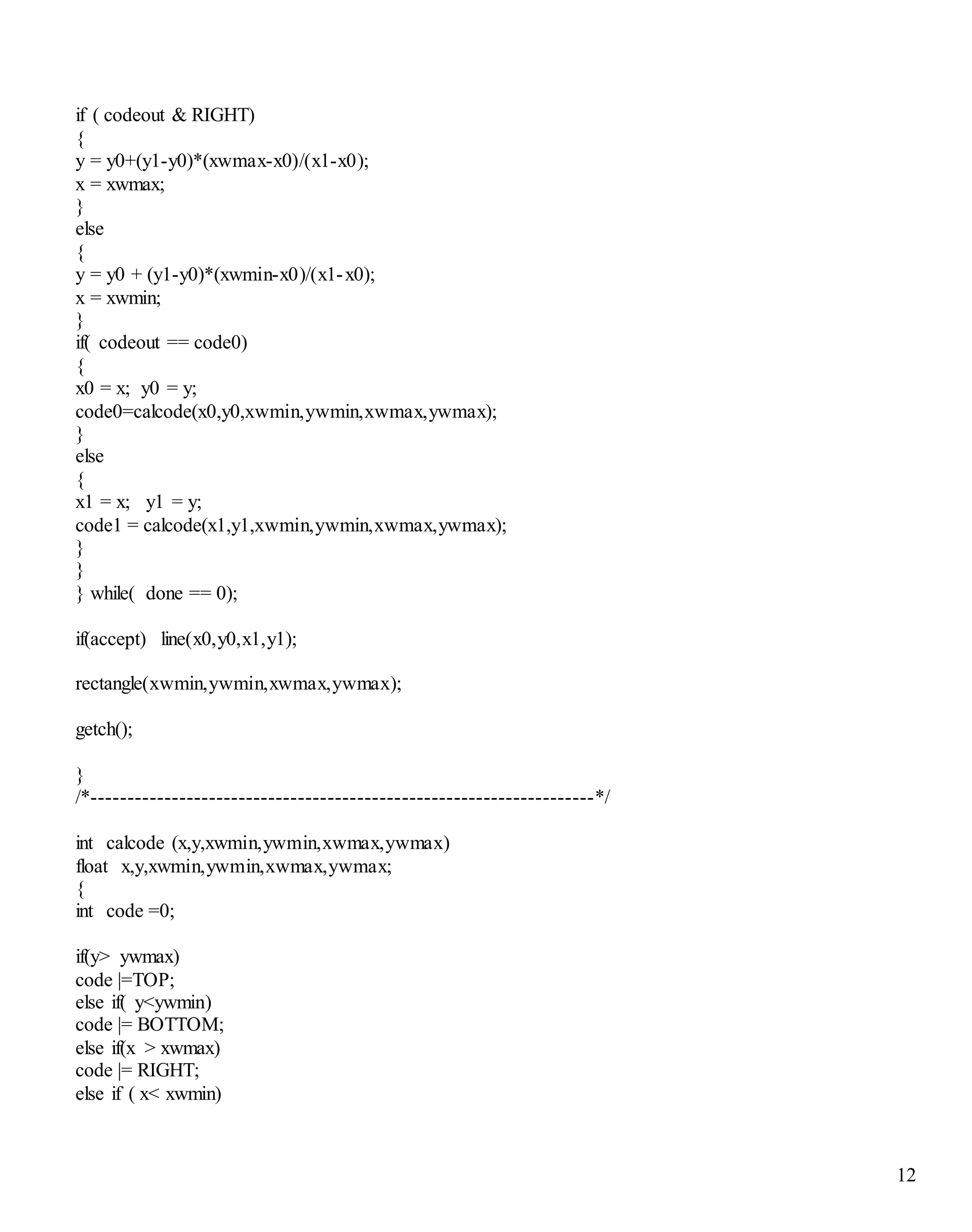
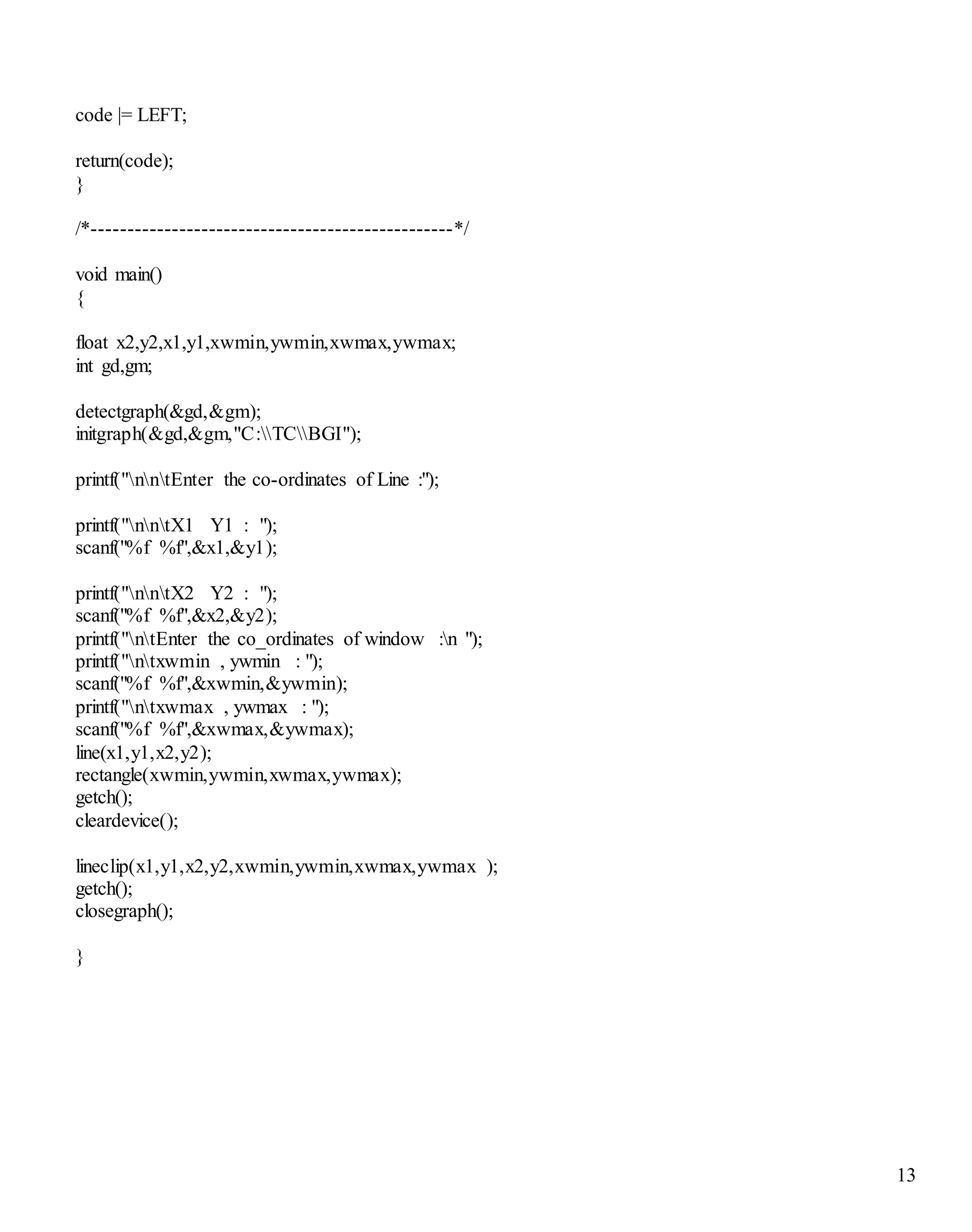
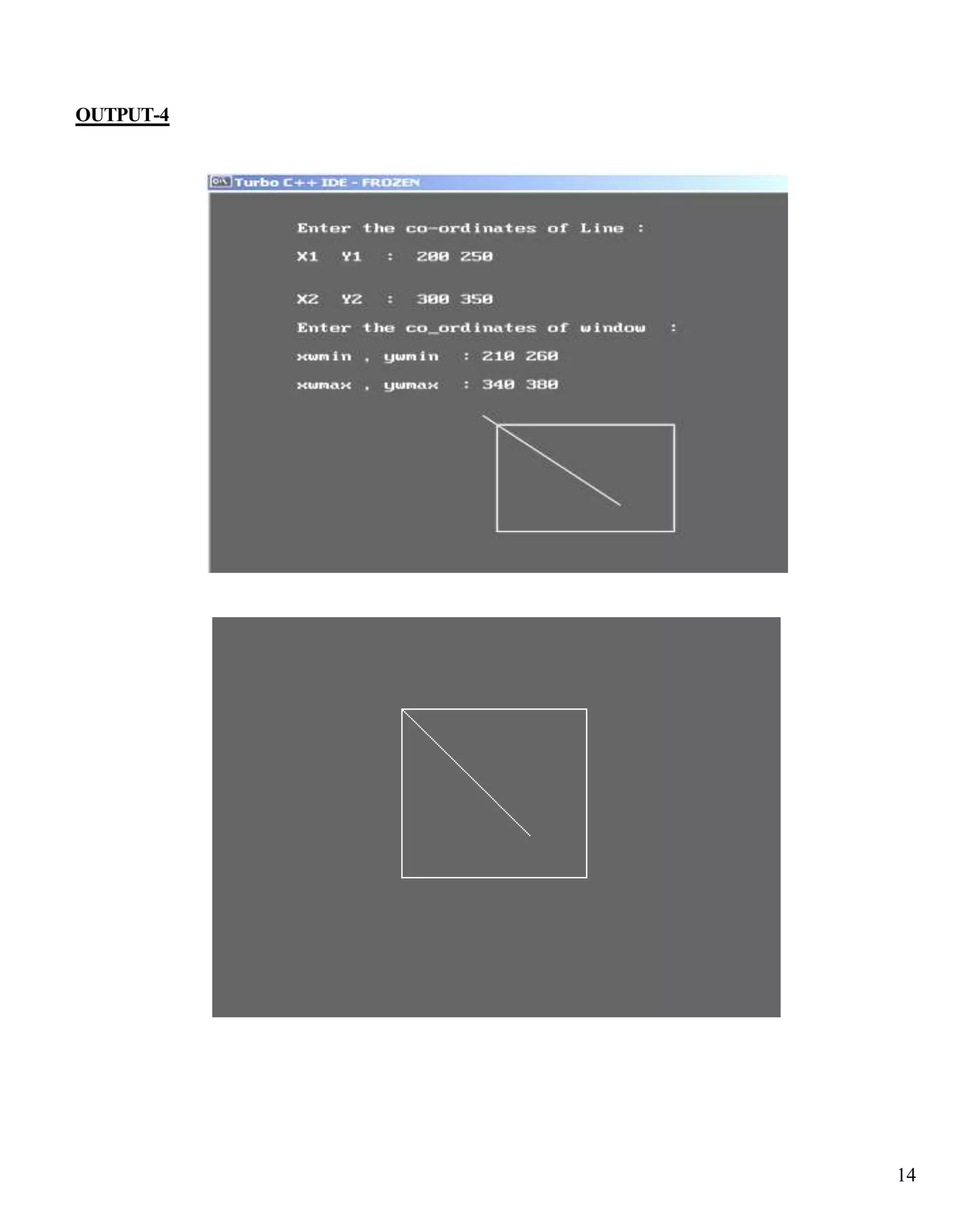
![15
Program 5
WRITE A C PROGRAM TO DRAW A BEZIER – CURVE.
#include<stdio.h>
#include<graphics.h>
#include<stdlib.h>
#include<string.h>
#include<conio.h>
#include<math.h>
int *x,*y;
void bezier(int *x1,int *y1)
{
int xa,ya,za;
float u=0;
moveto(*x1,*y1);
while (u<=1)
{
xa=(*(x1+3)*pow(u,3))+(3*(*(x1+2))*pow(u,2)*(1-u))+
(3*(*(x1+1))*u*pow(1-u,2))+(*x1*pow(1-u,3));
ya=(*(y1+3)*pow(u,3))+(3*(*(y1+2))*pow(u,2)*(1-u))+
(3*(*(y1+1))*u*pow(1-u,2))+(*y1*pow(1-u,3));
lineto(xa, ya);
u += 0.01;
}
}
void main(void)
{
int gd=DETECT, gm, key, xpos, ypos, i = 0;
char xp[4], yp[4];
x = (int *)malloc(sizeof(int) * 4);
y = (int *)malloc(sizeof(int) * 4);
//registerbgidriver(EGAVGA_driver);
initgraph(&gd, &gm, "c:tcbgi");
outtextxy(10, 460, "Press Esc to exit.");
outtextxy(400, 460, "Present position : ");
moveto(getmaxx() / 2, getmaxy() / 2);
do
{](https://image.slidesharecdn.com/computergraphicslabfilecprograms-141126103629-conversion-gate01/75/Computer-Graphics-Lab-File-C-Programs-15-2048.jpg)
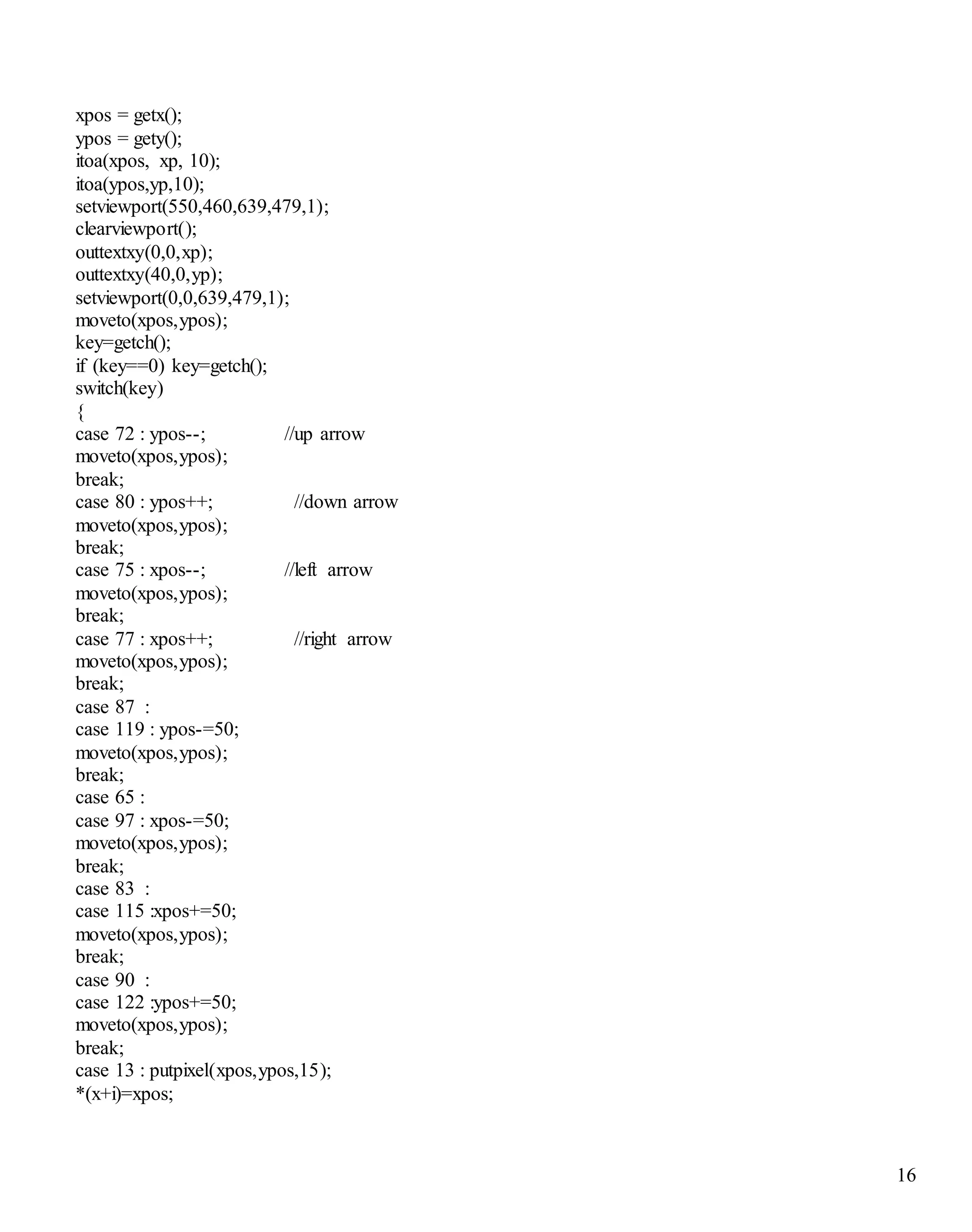
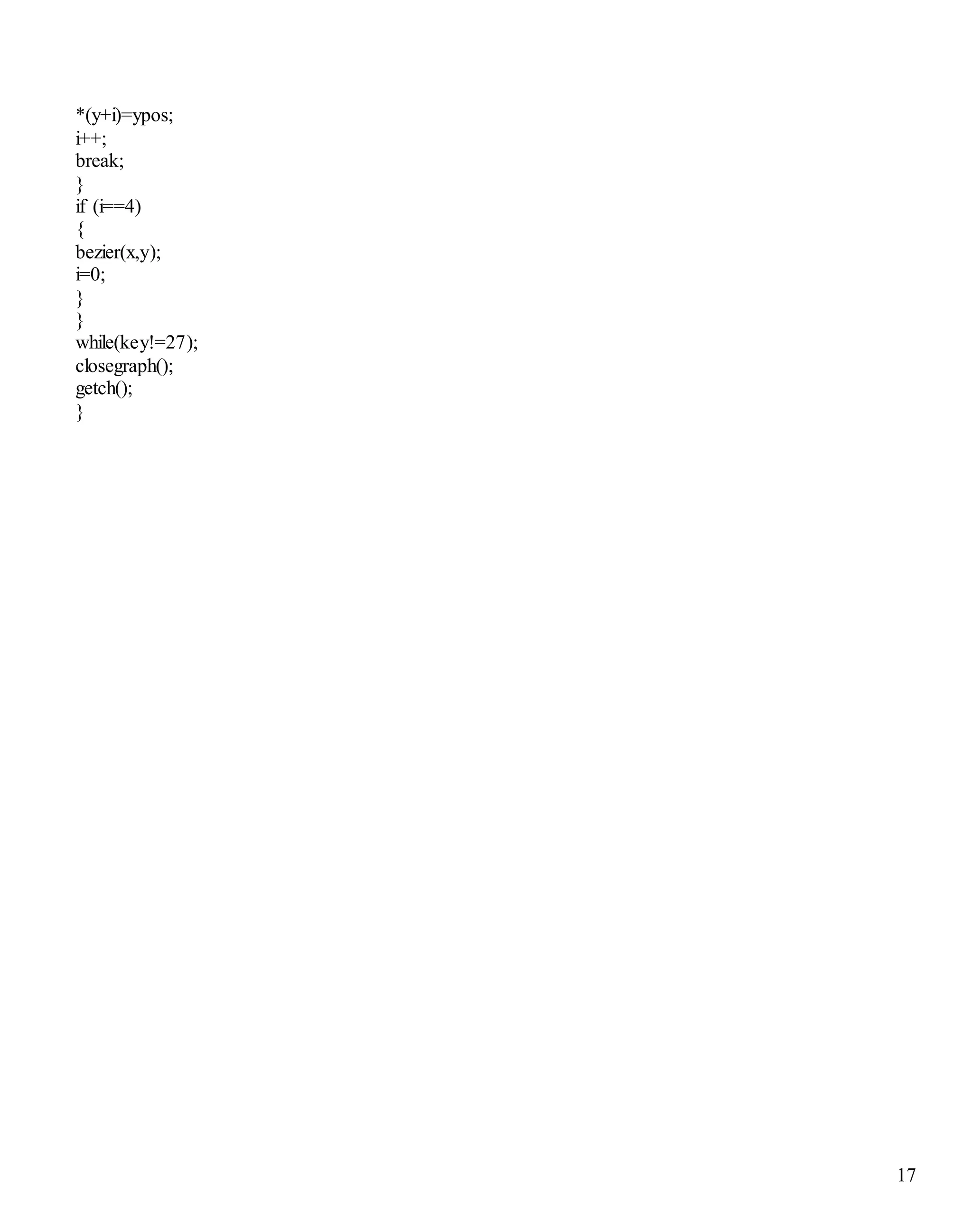
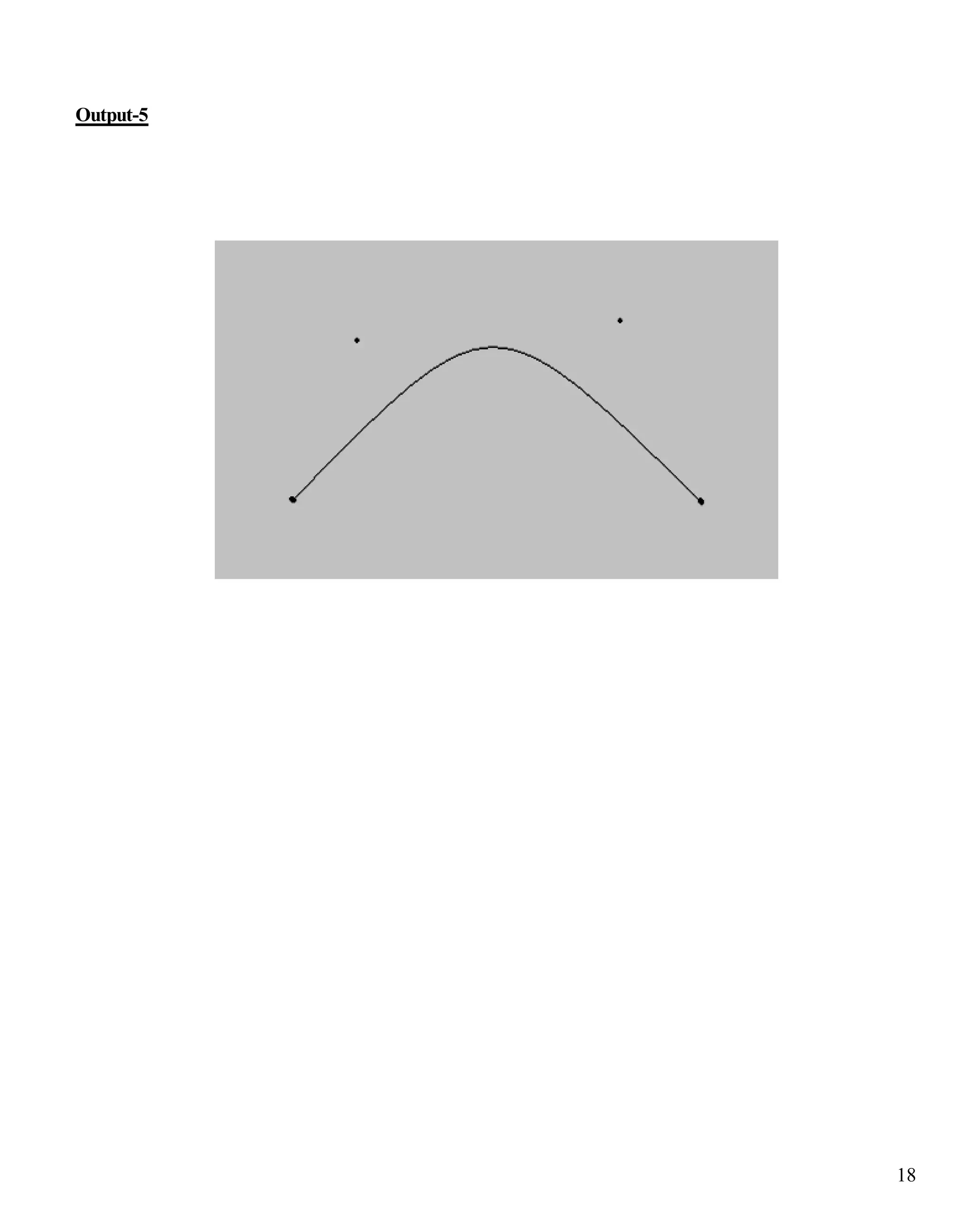
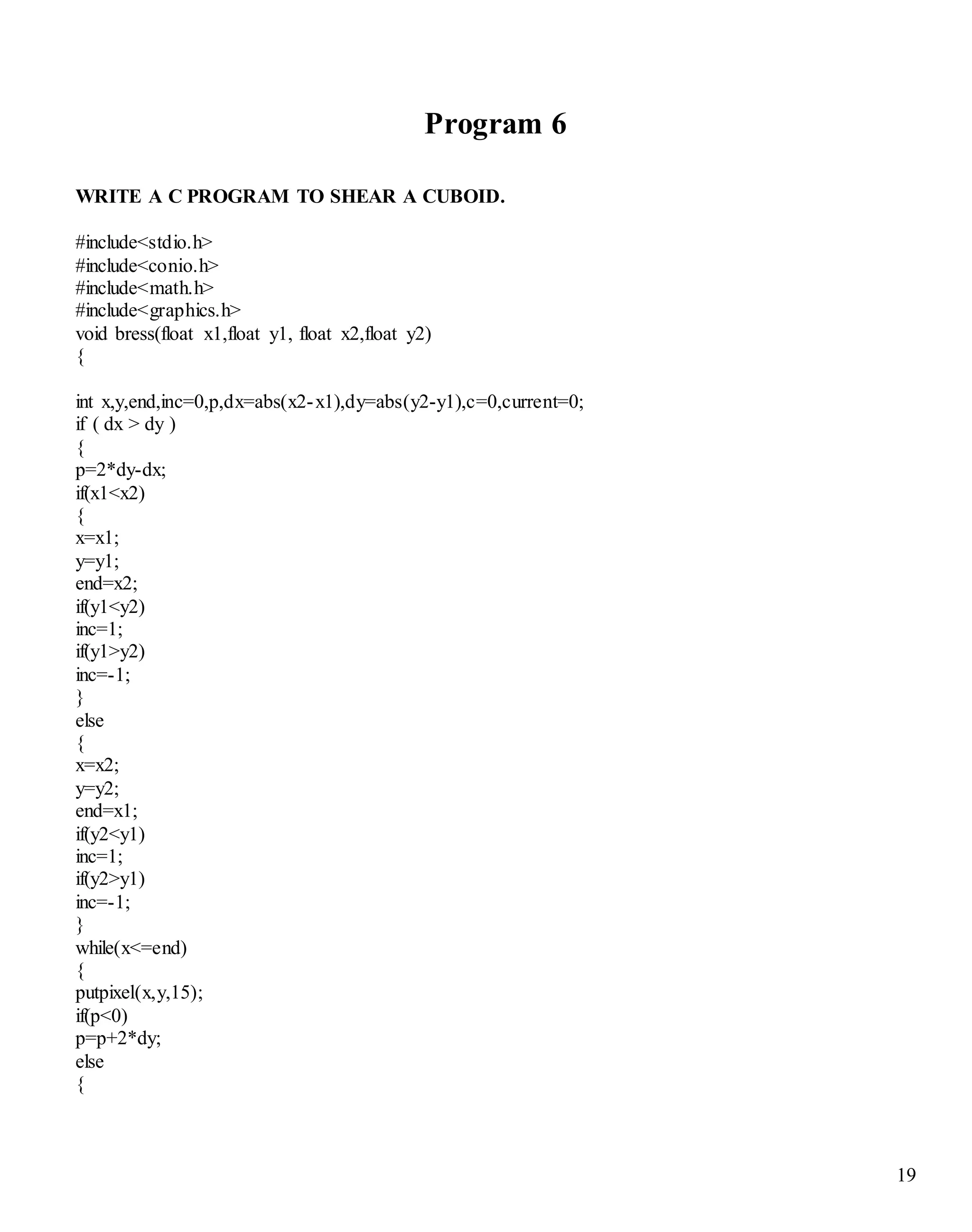
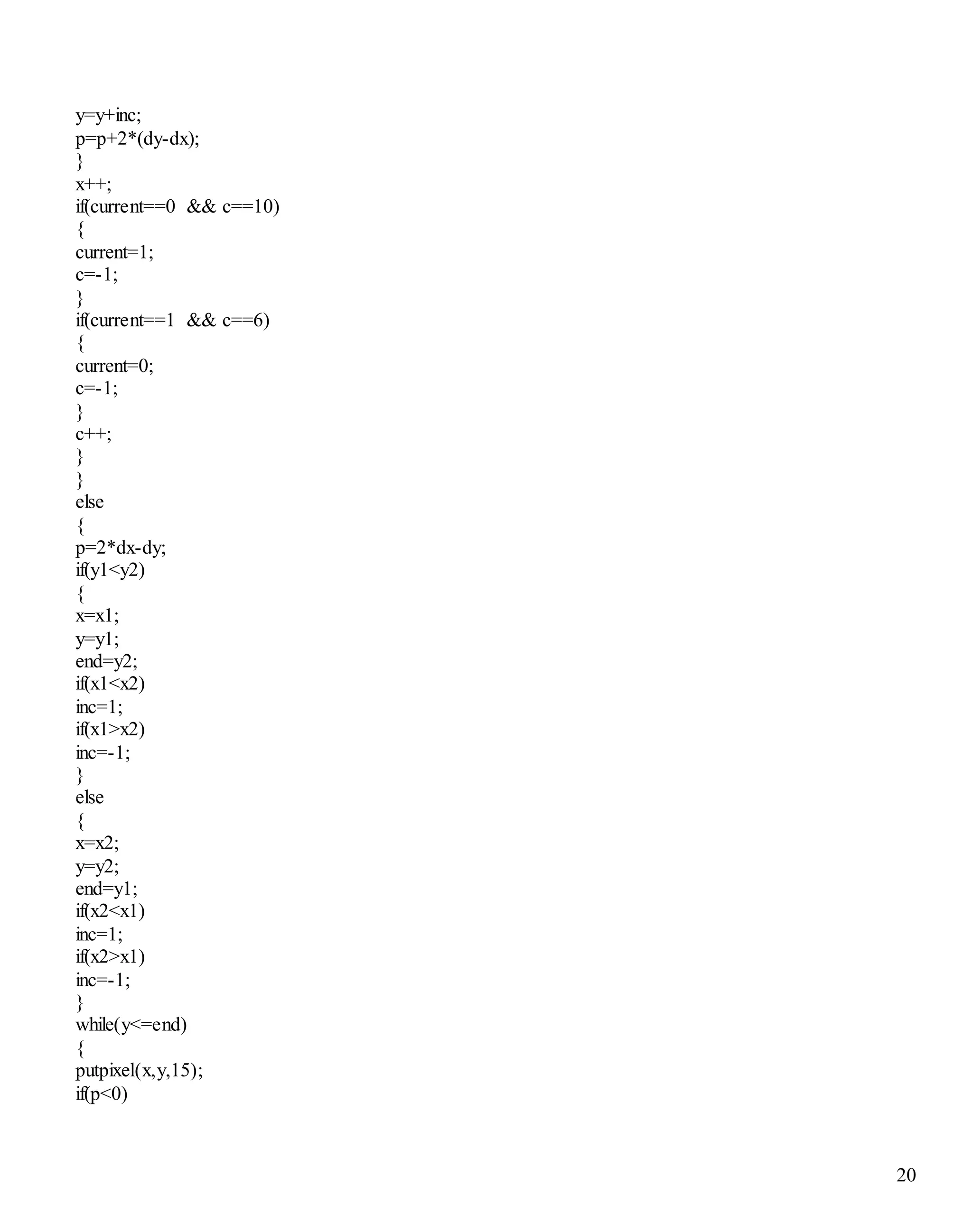
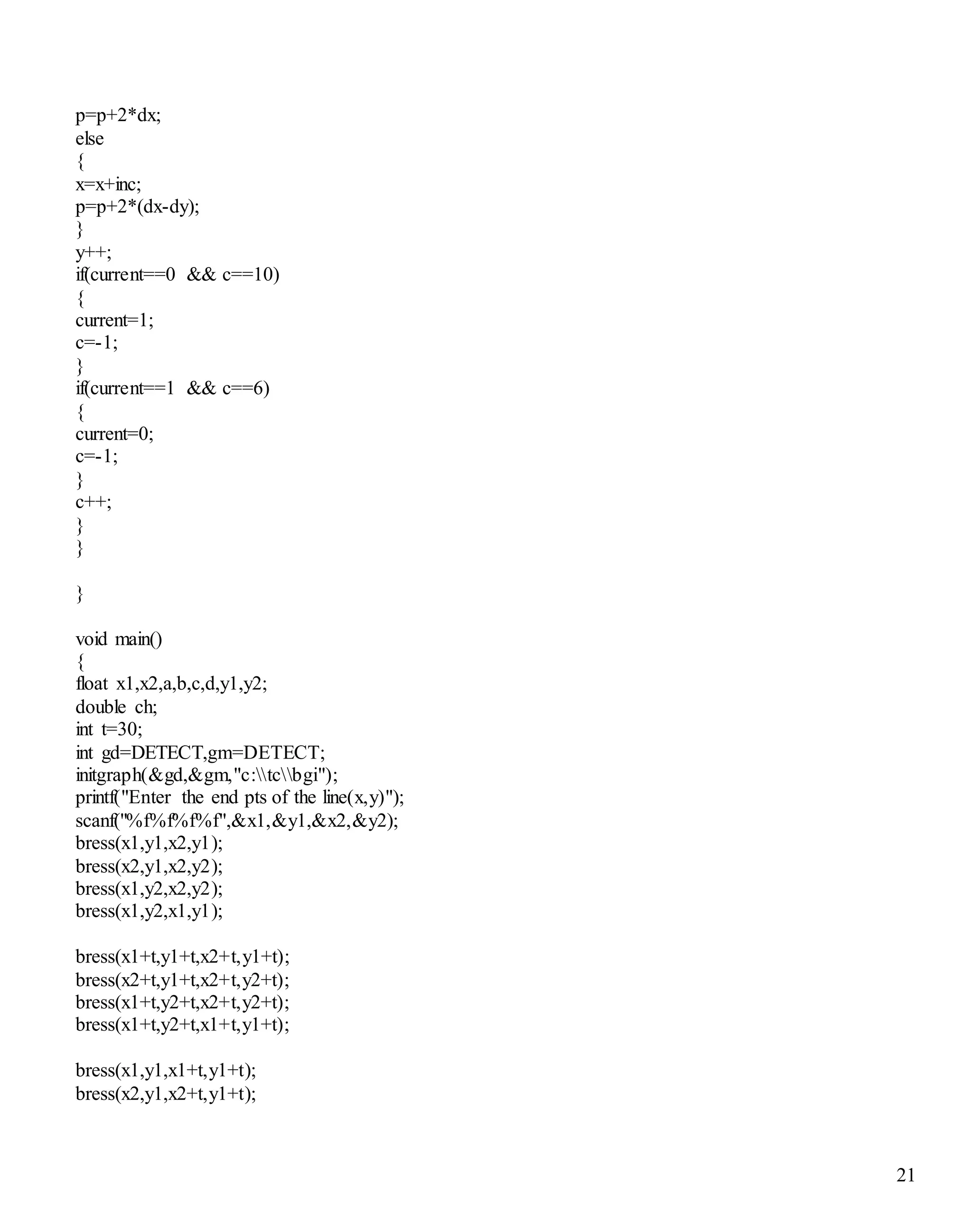
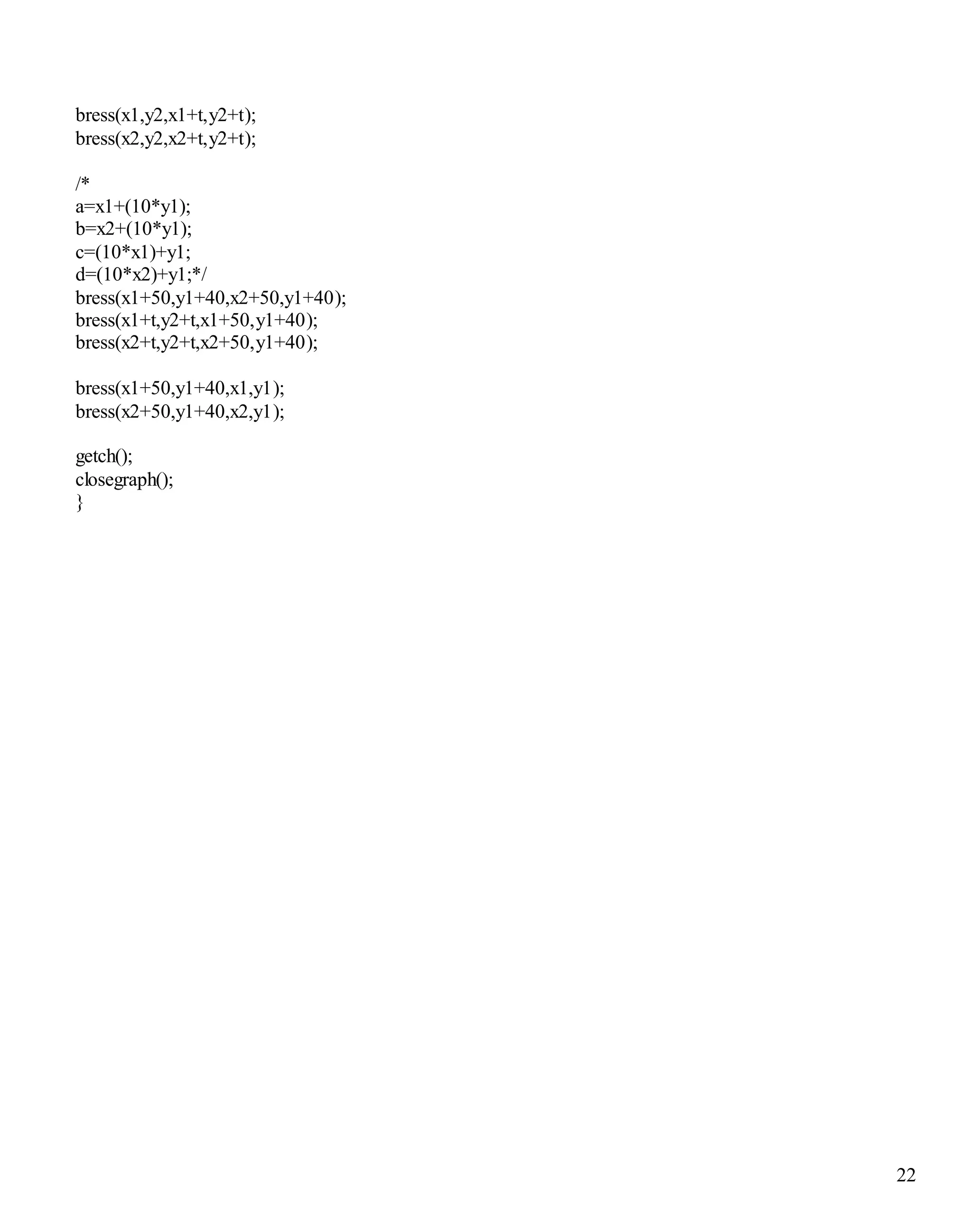
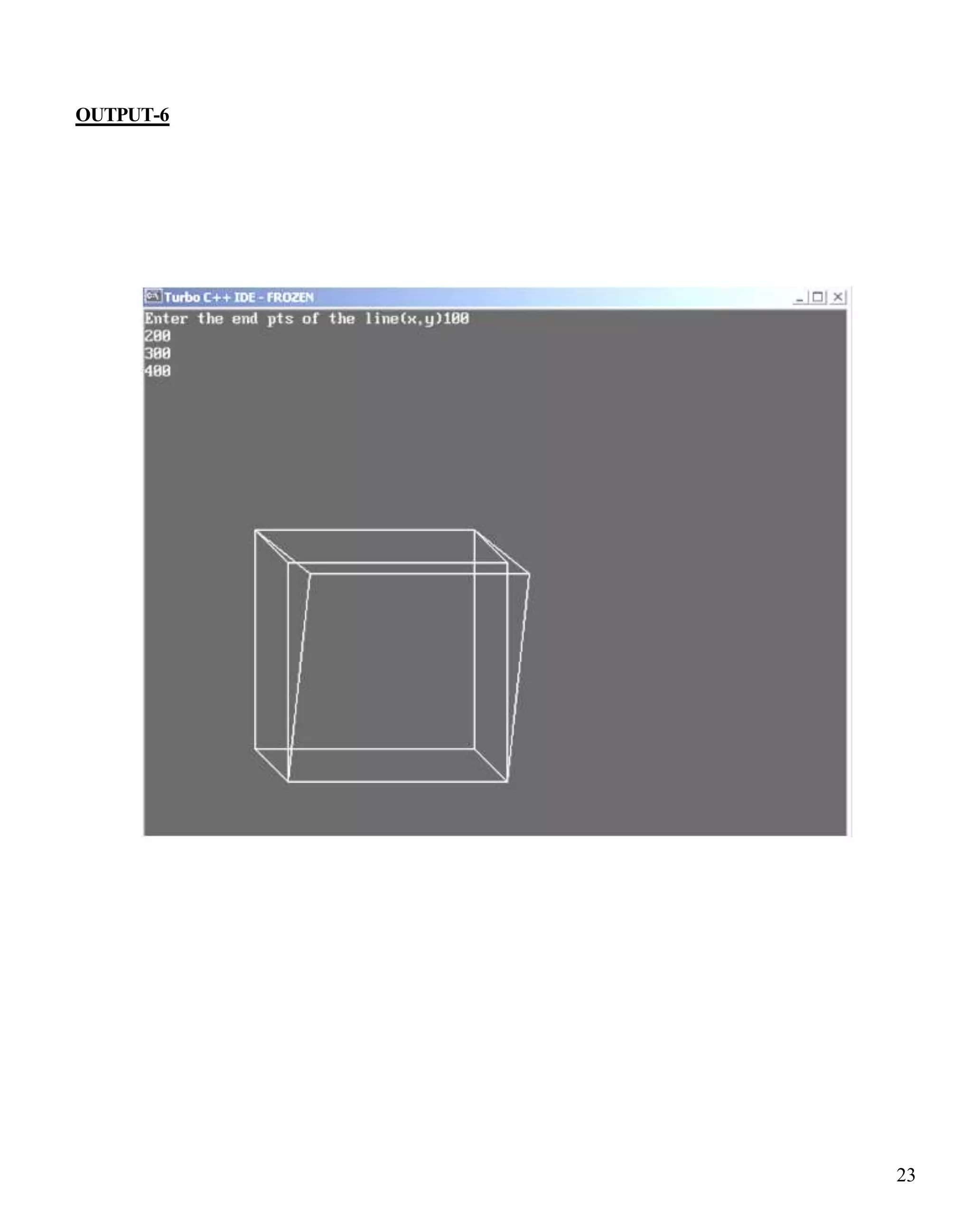
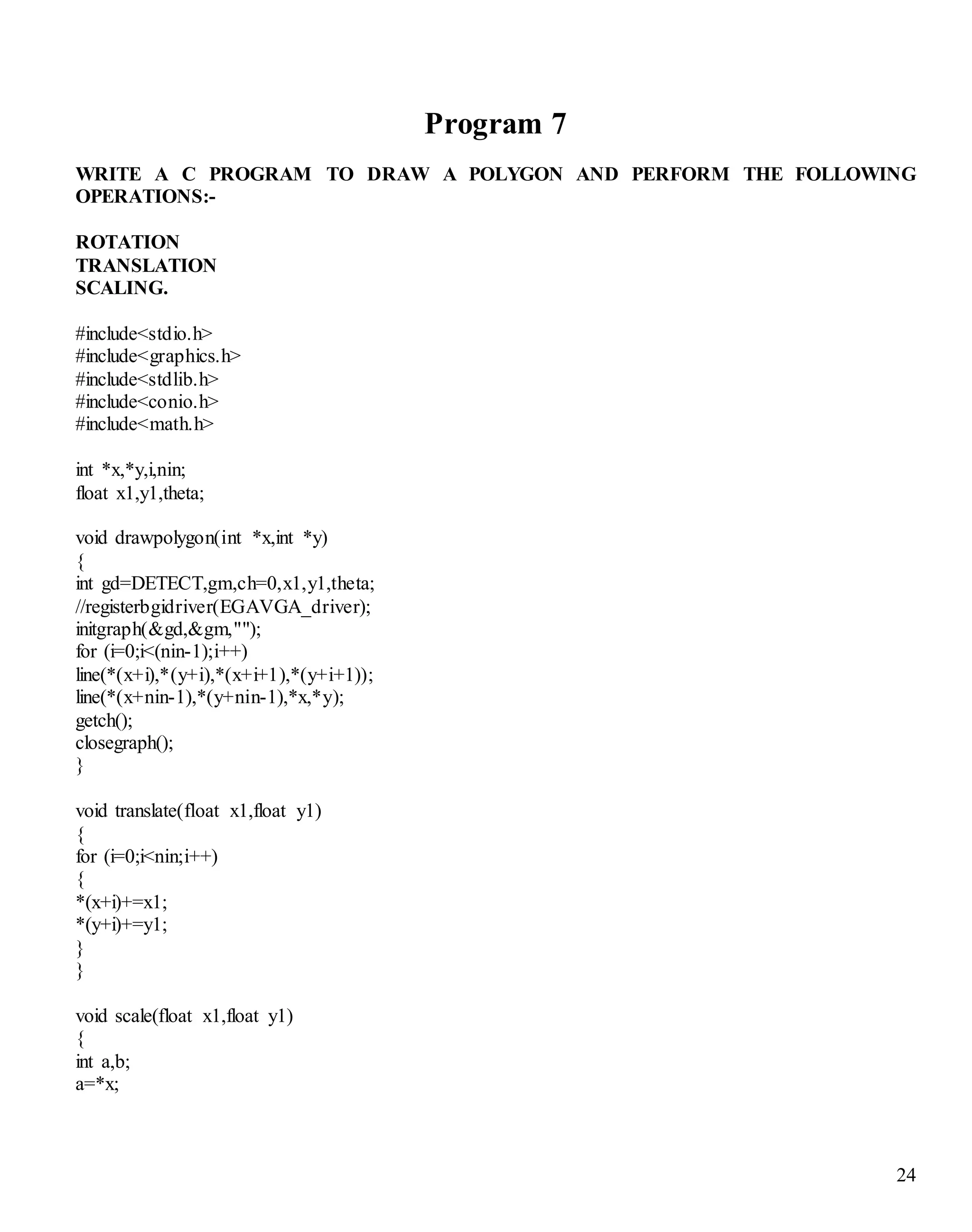
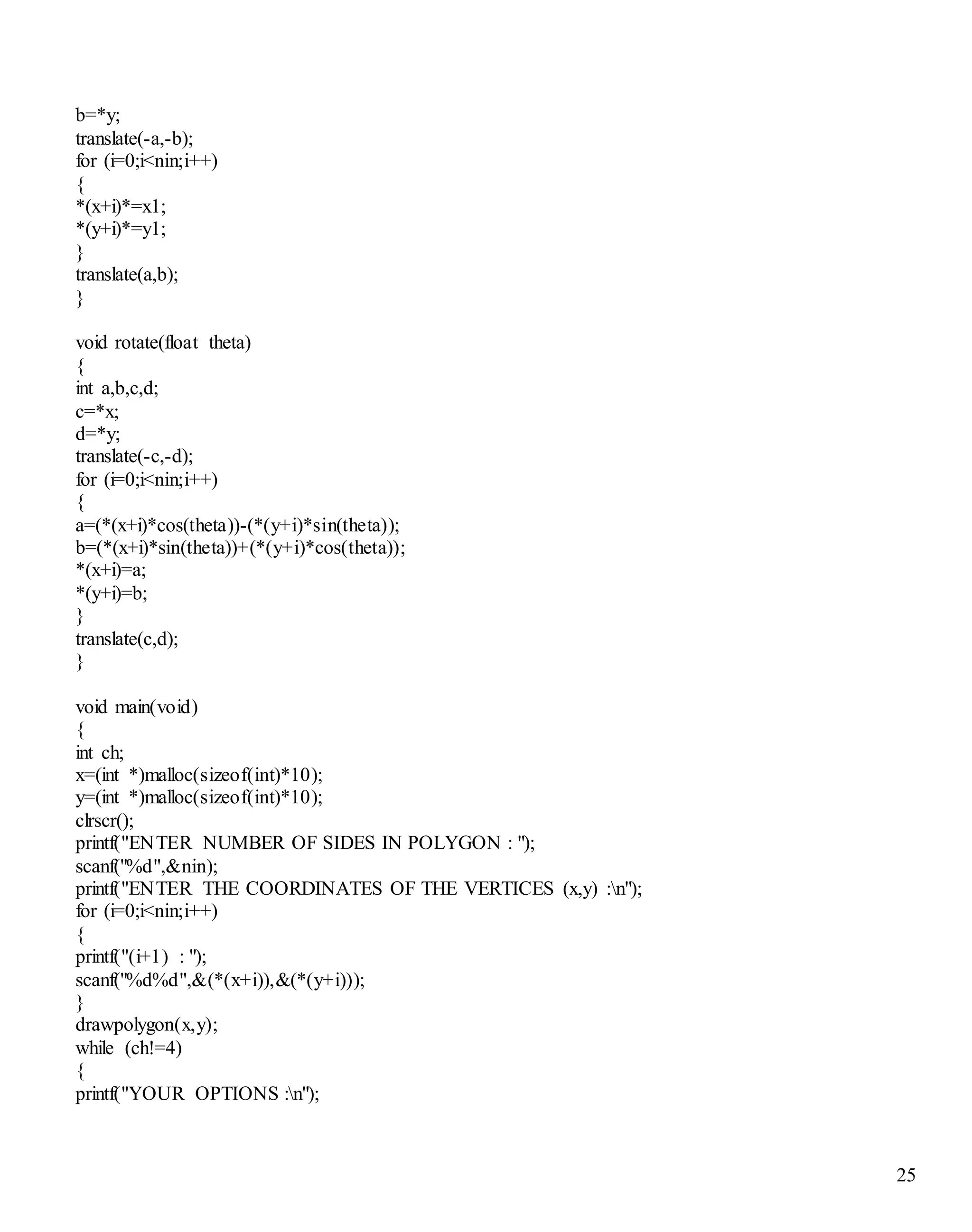
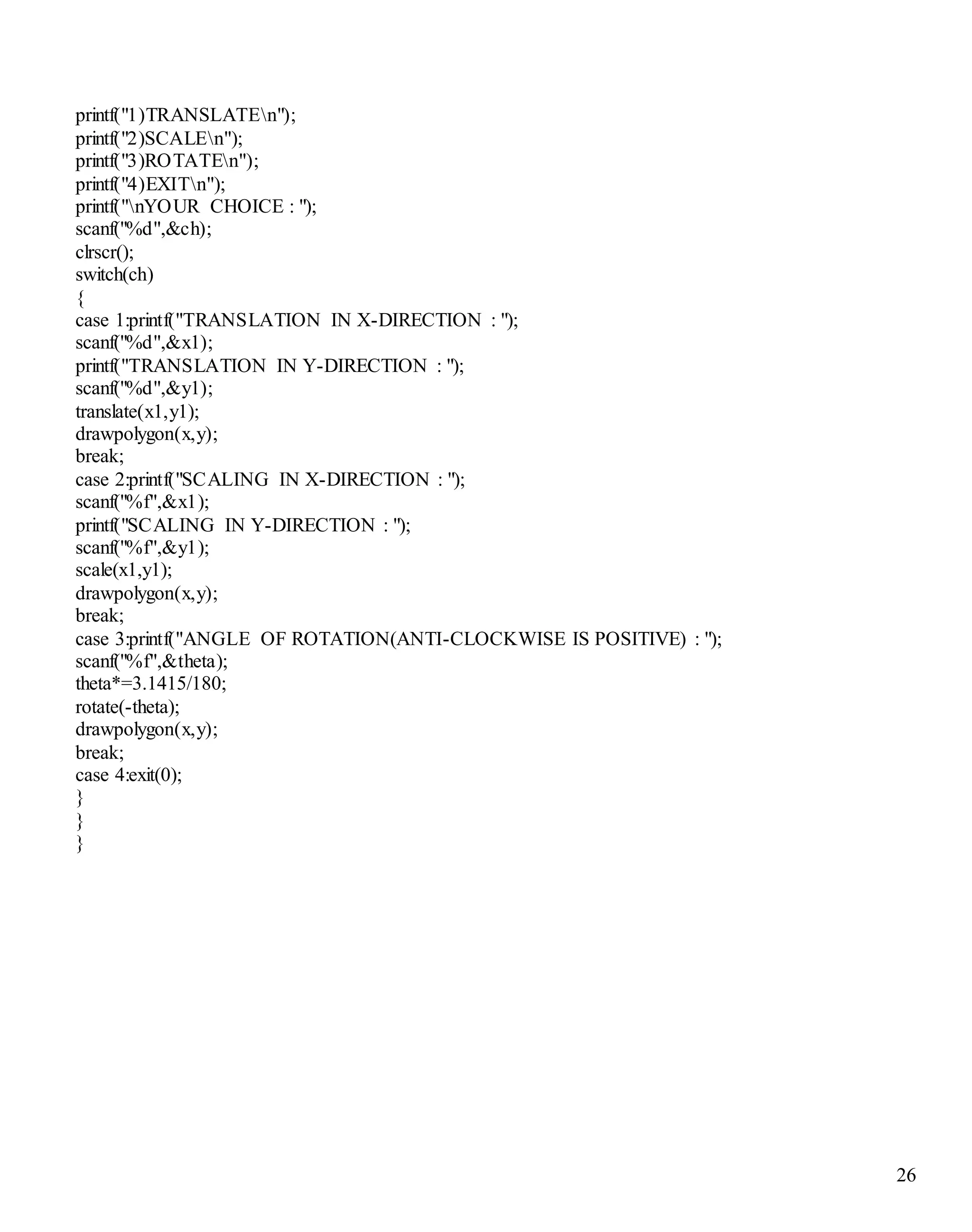
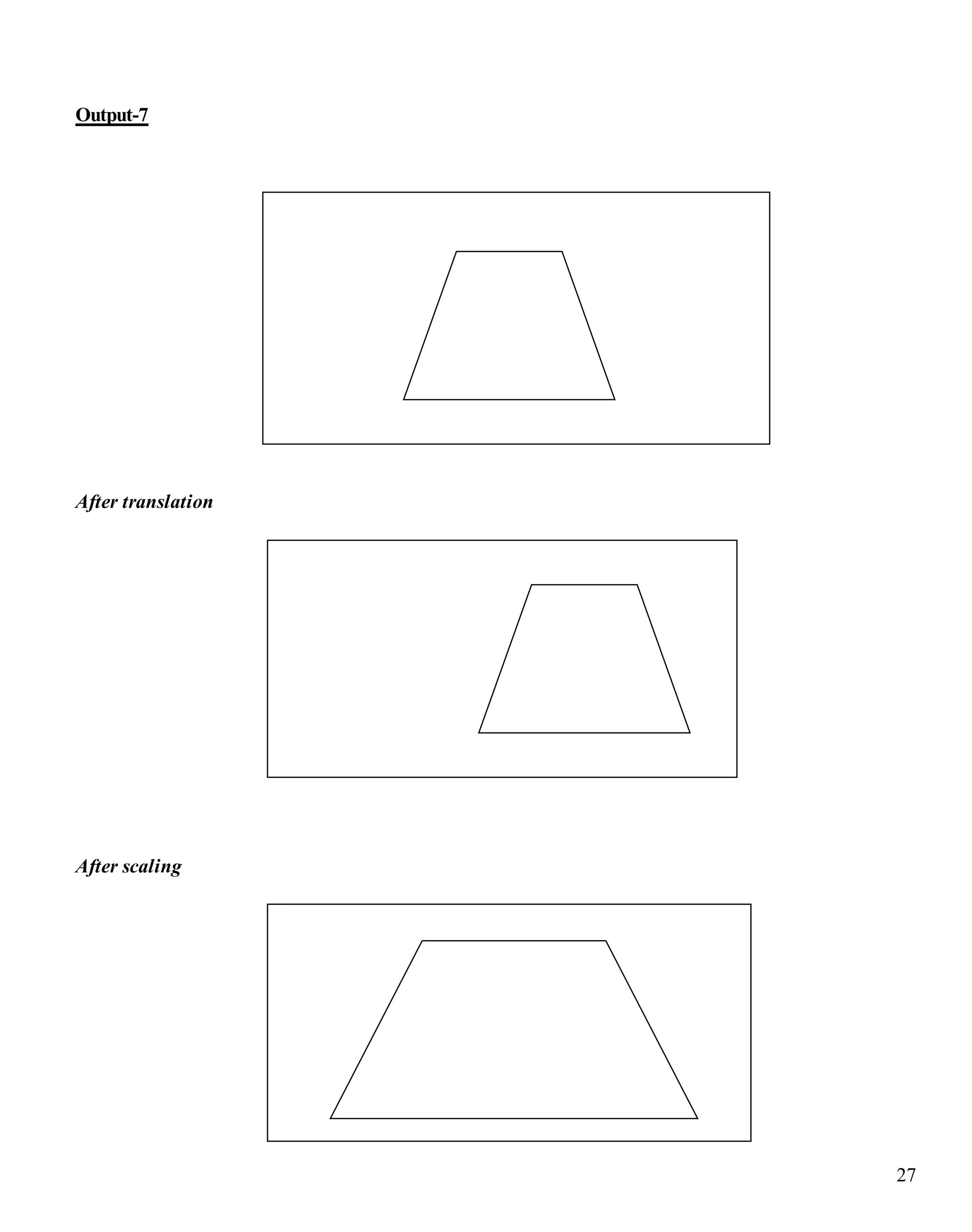
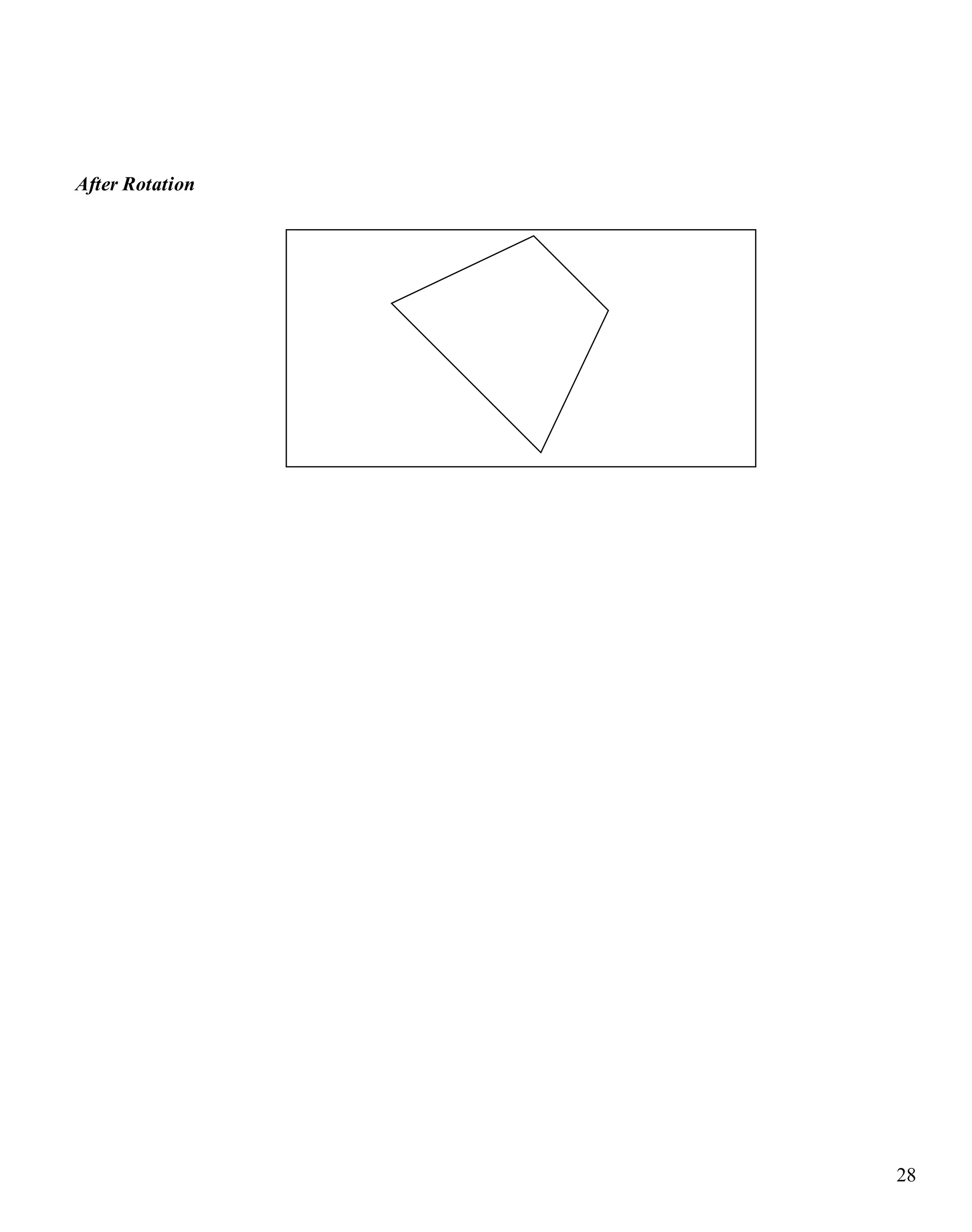
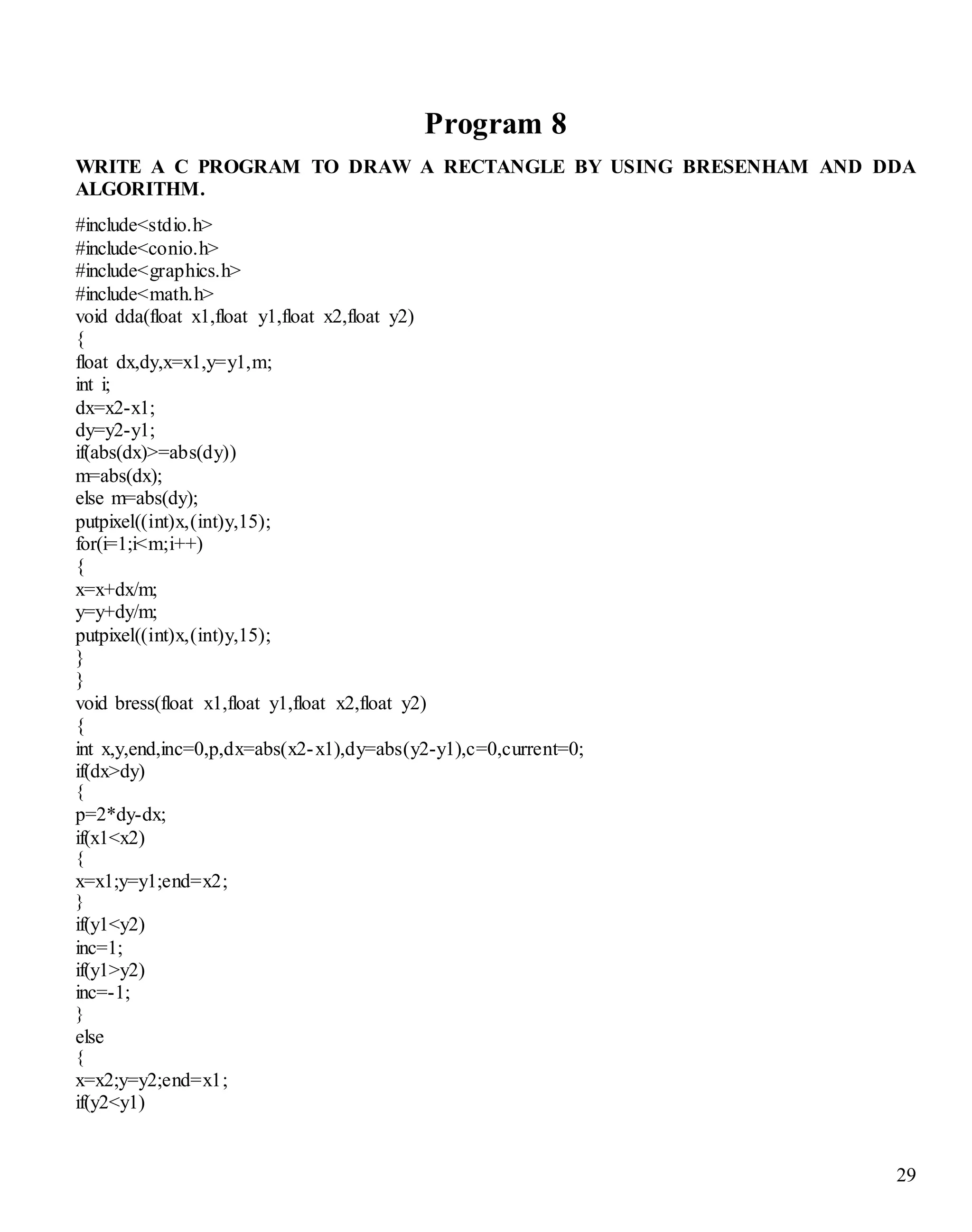
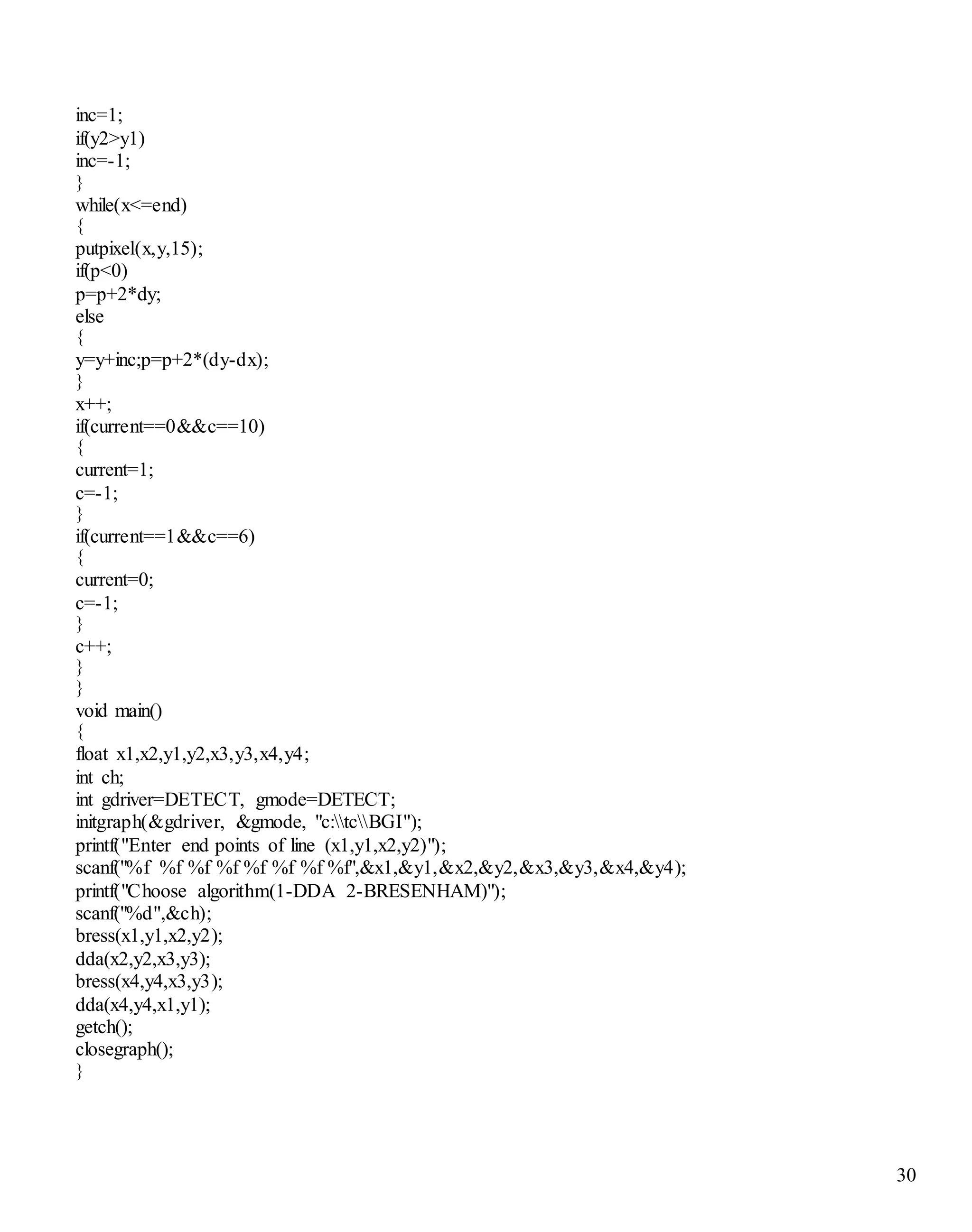
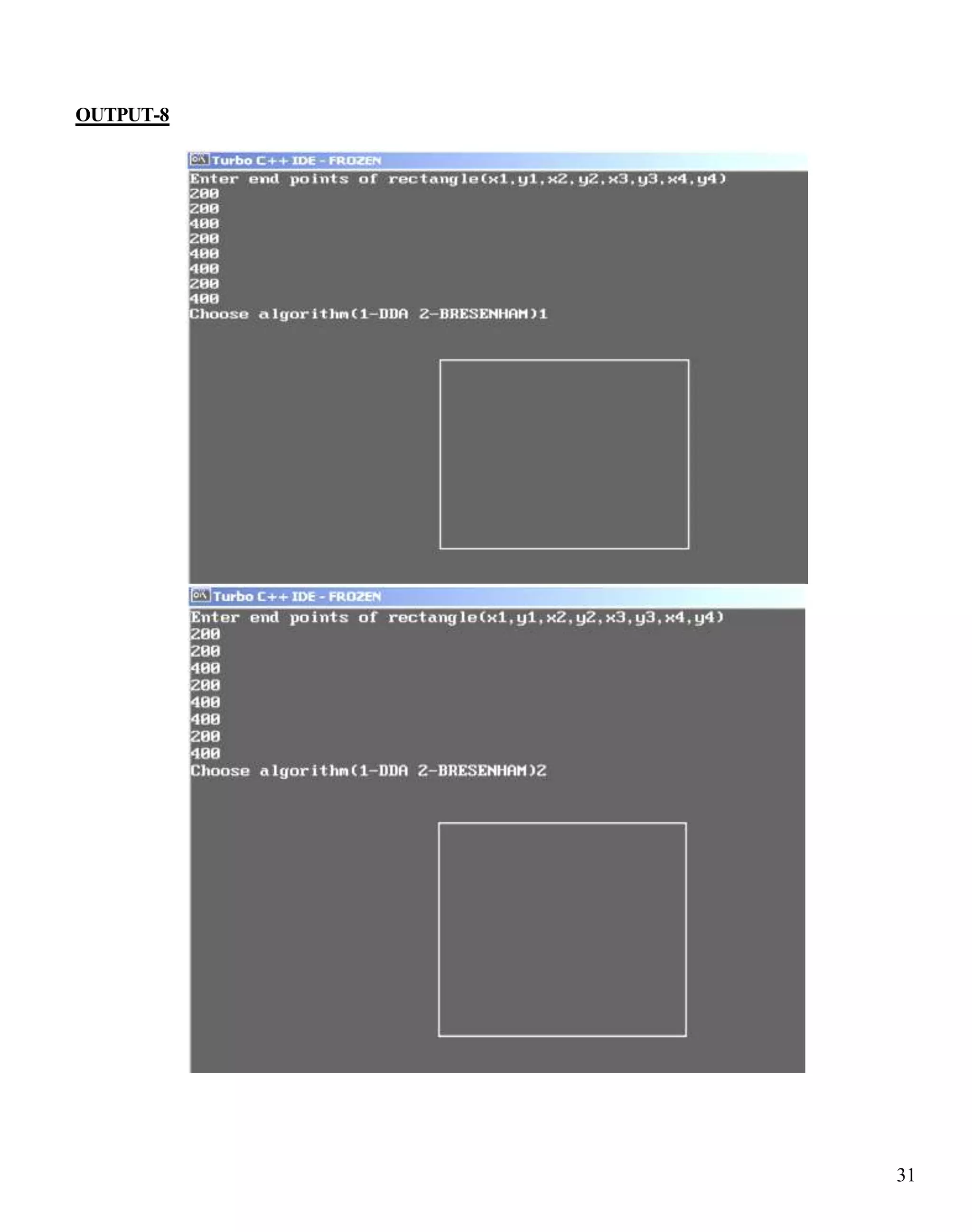
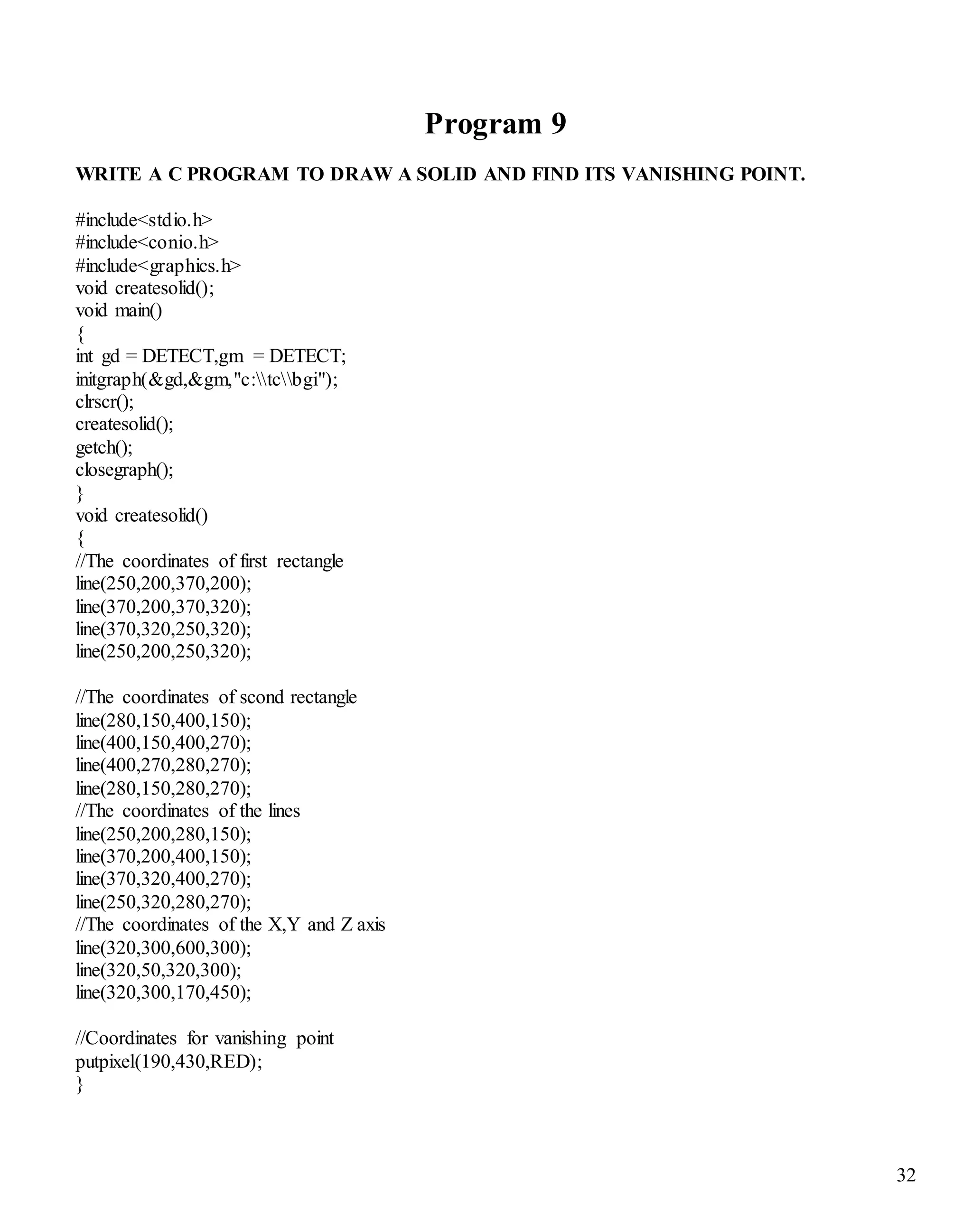
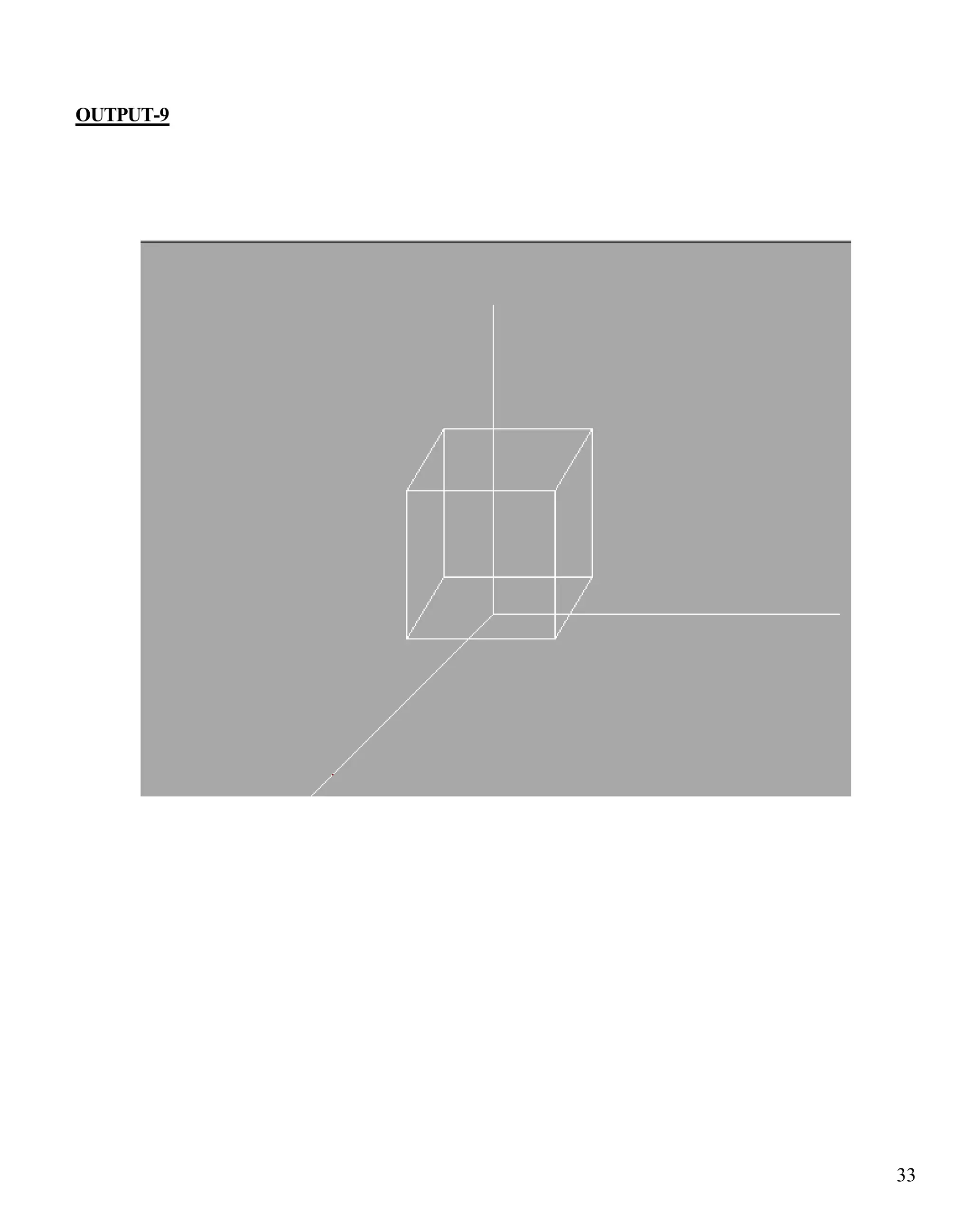
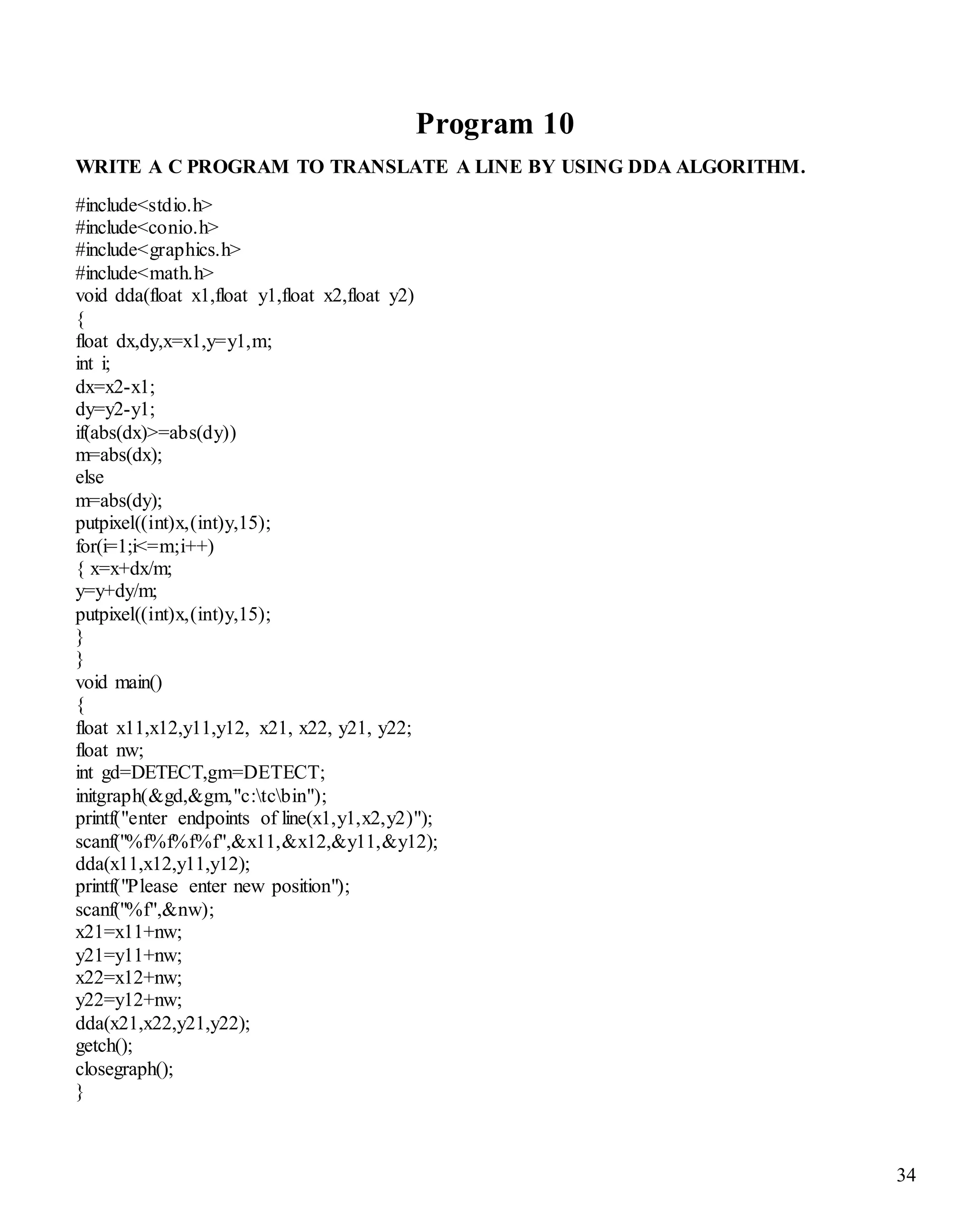
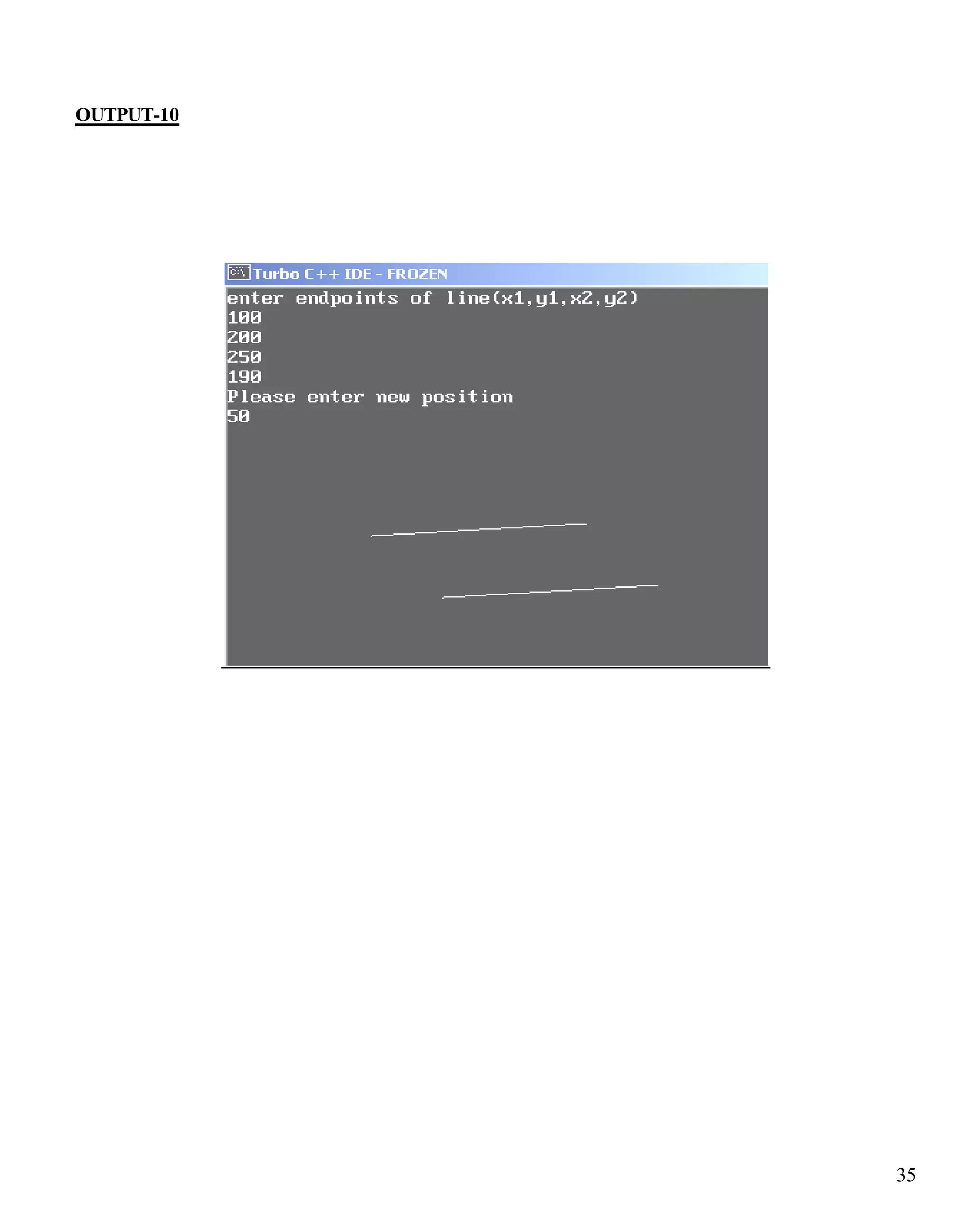
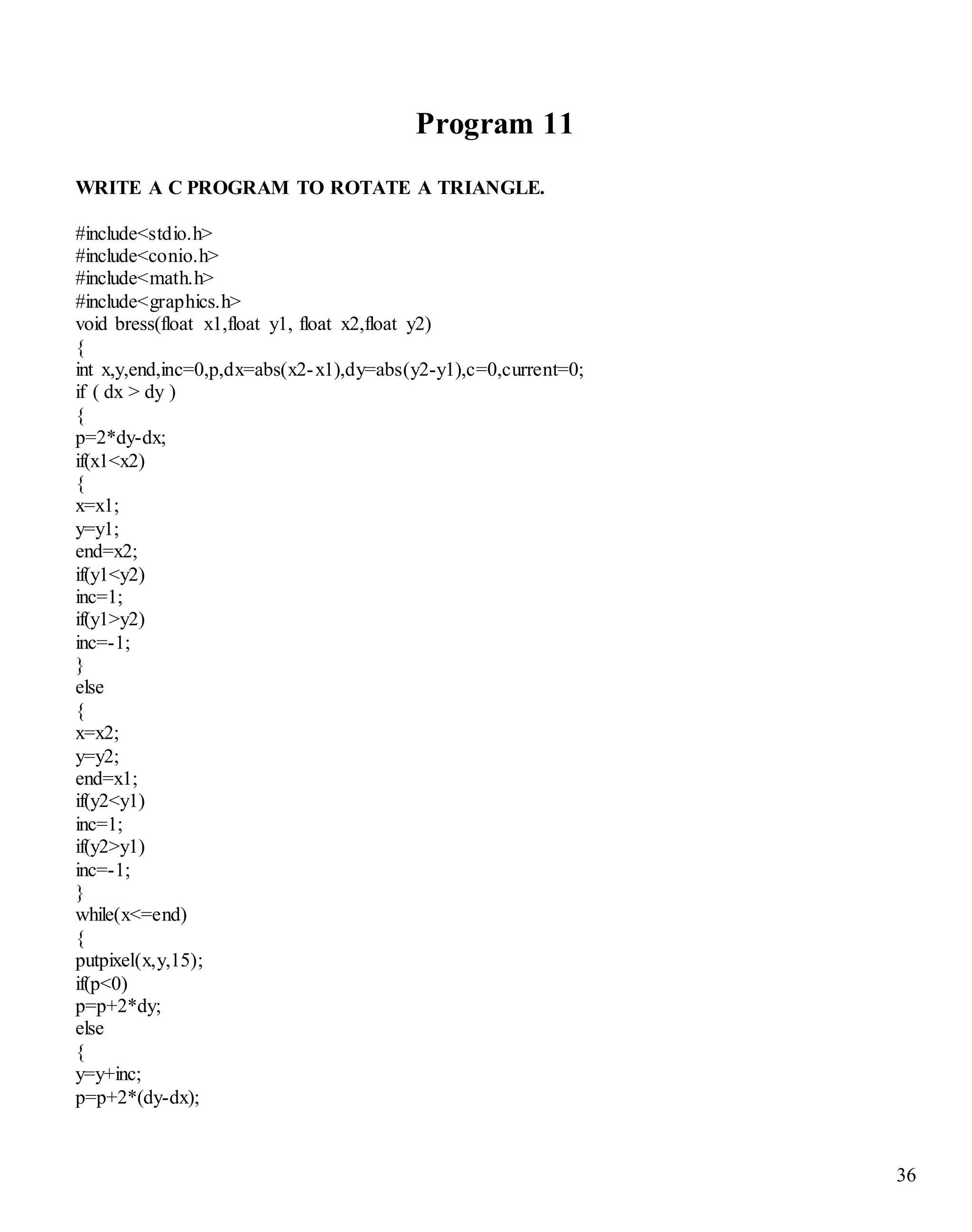
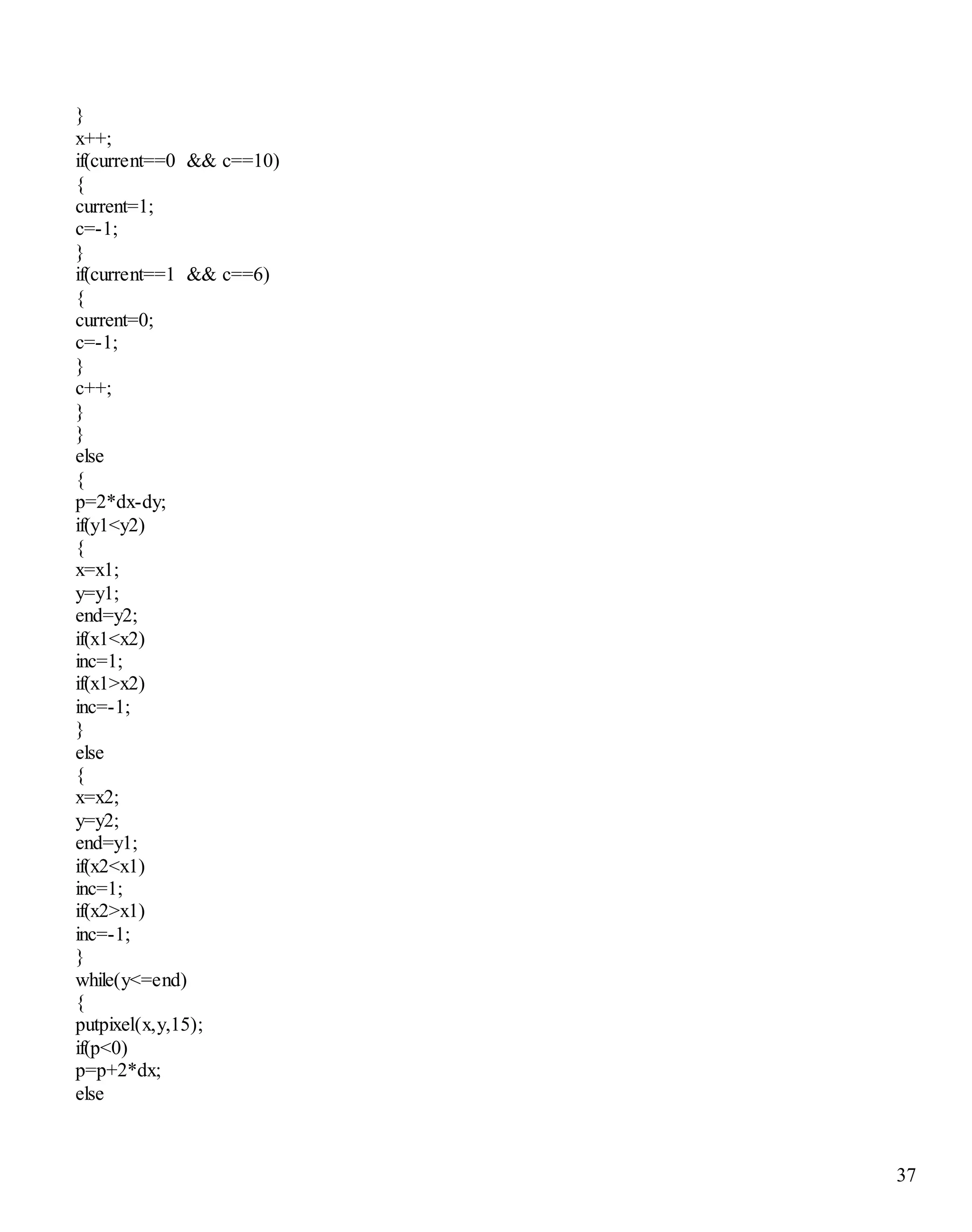
![38
{
x=x+inc;
p=p+2*(dx-dy);
}
y++;
if(current==0 && c==10)
{
current=1;
c=-1;
}
if(current==1 && c==6)
{
current=0;
c=-1;
}
c++;
}
}
}
void main()
{
float a[3][3],b[3][3],c[3][3],i,j,k;
float r=(3.14*45)/180;
int gd=DETECT,gm=DETECT;
clrscr();
initgraph(&gd,&gm,"c:tcbgi");
//IMAGE(triangle)
bress(0,0,100,100);
bress(100,100,500,200);
bress(500,200,0,0);
a[0][0]=0;
a[0][1]=0;
a[0][2]=1;
a[1][0]=100;
a[1][1]=100;
a[1][2]=1;
a[2][0]=500;
a[2][1]=200;
a[2][2]=1;
b[0][0]=cos(r);](https://image.slidesharecdn.com/computergraphicslabfilecprograms-141126103629-conversion-gate01/75/Computer-Graphics-Lab-File-C-Programs-38-2048.jpg)
![39
b[0][1]=sin(r);
b[0][2]=0;
b[1][0]=-sin(r);
b[1][1]=cos(r);
b[1][2]=0;
b[2][0]=0;
b[2][1]=0;
b[2][2]=1;
//MATRIX MULTIPLICATION
for(i=0;i<3;i++)
for(j=0;j<3;j++)
{
c[i][j]=0;
for(k=0;k<3;k++)
{
c[i][j]+=a[i][k]*b[k][j];
}
}
//AFTER ROTATION
line(c[0][0],c[0][1],c[1][0],c[1][1]);
line(c[1][0],c[1][1],c[2][0],c[2][1]);
line(c[2][0],c[2][1],c[0][0] ,c[0][1]);
getch();
}](https://image.slidesharecdn.com/computergraphicslabfilecprograms-141126103629-conversion-gate01/75/Computer-Graphics-Lab-File-C-Programs-39-2048.jpg)
